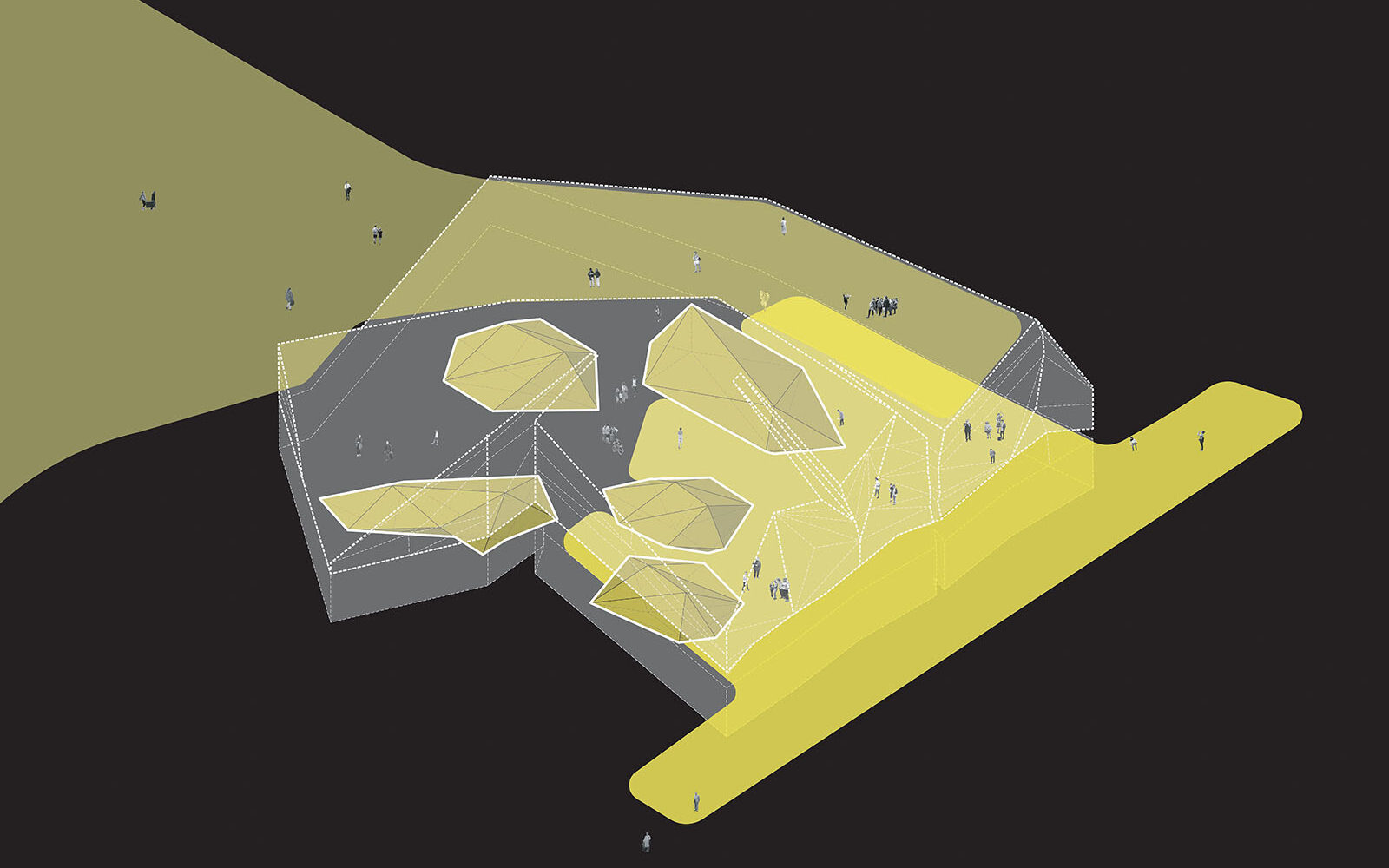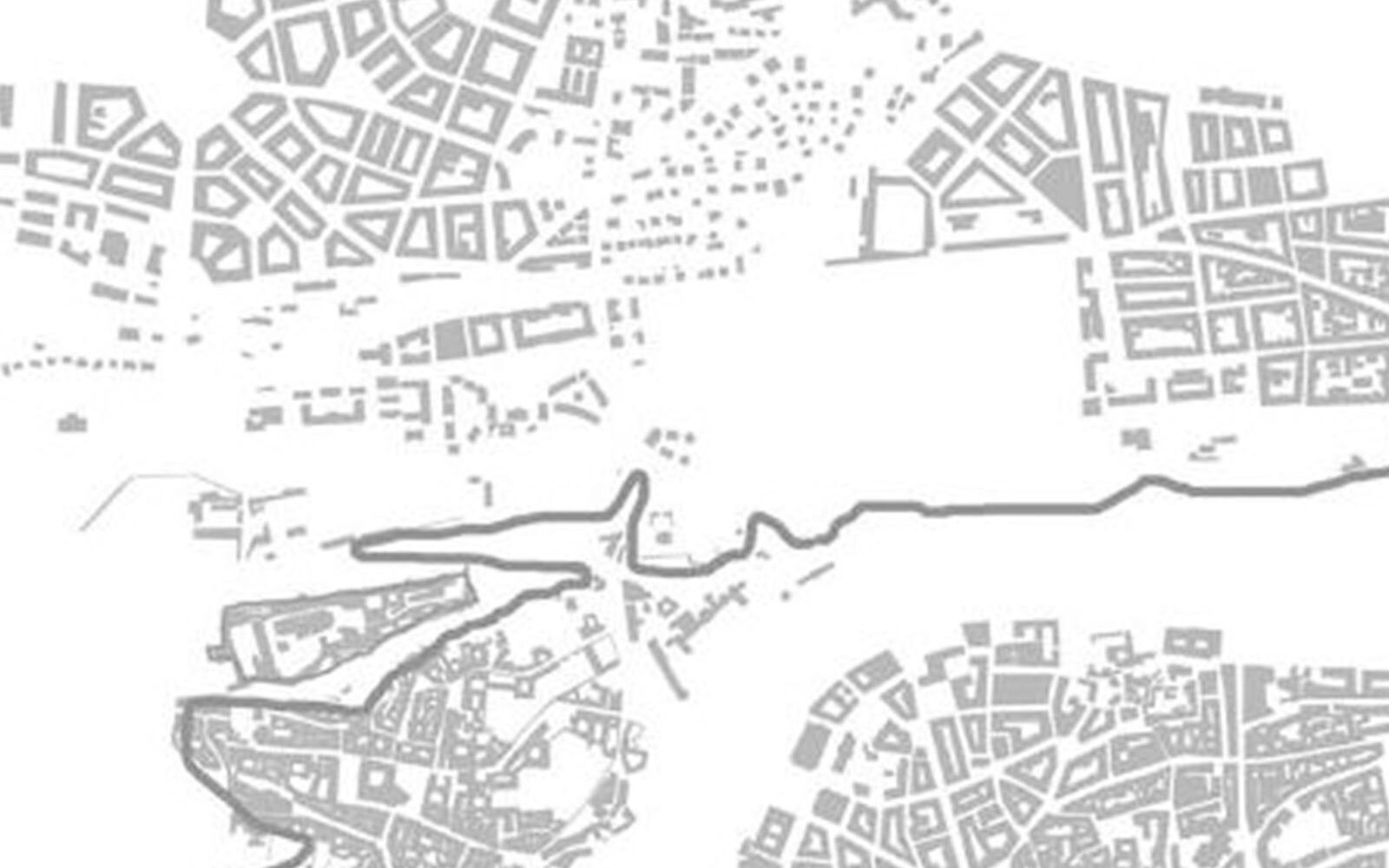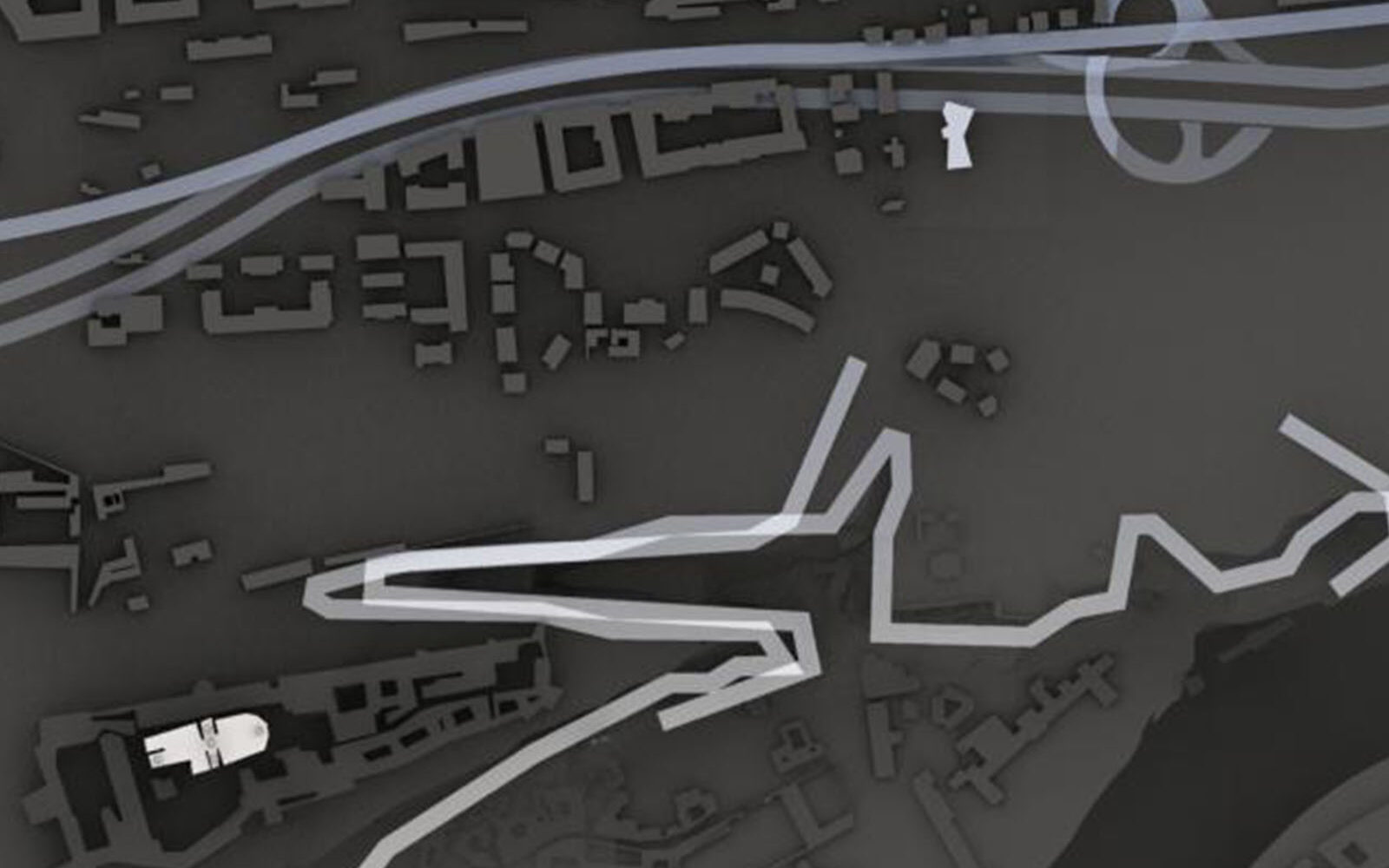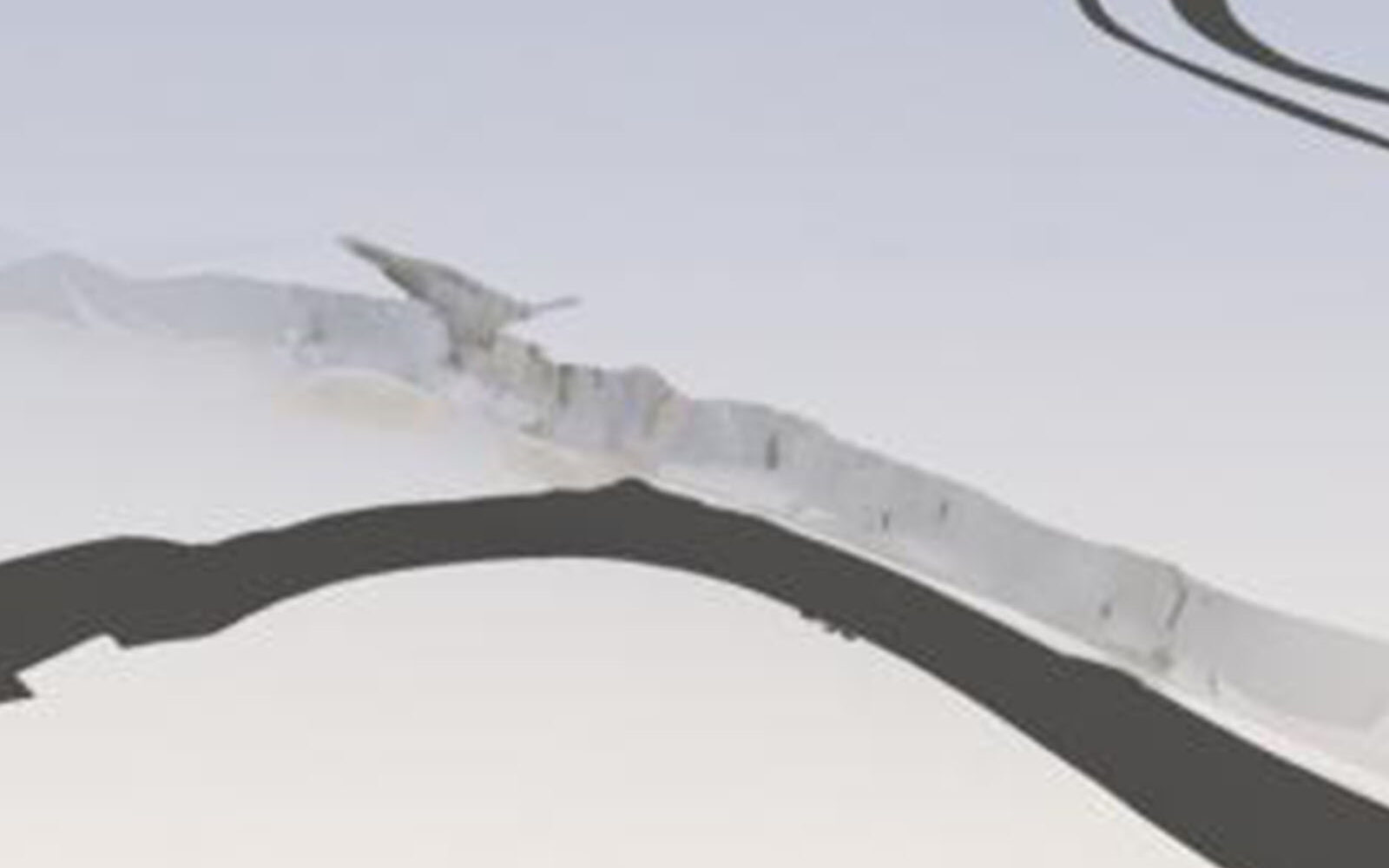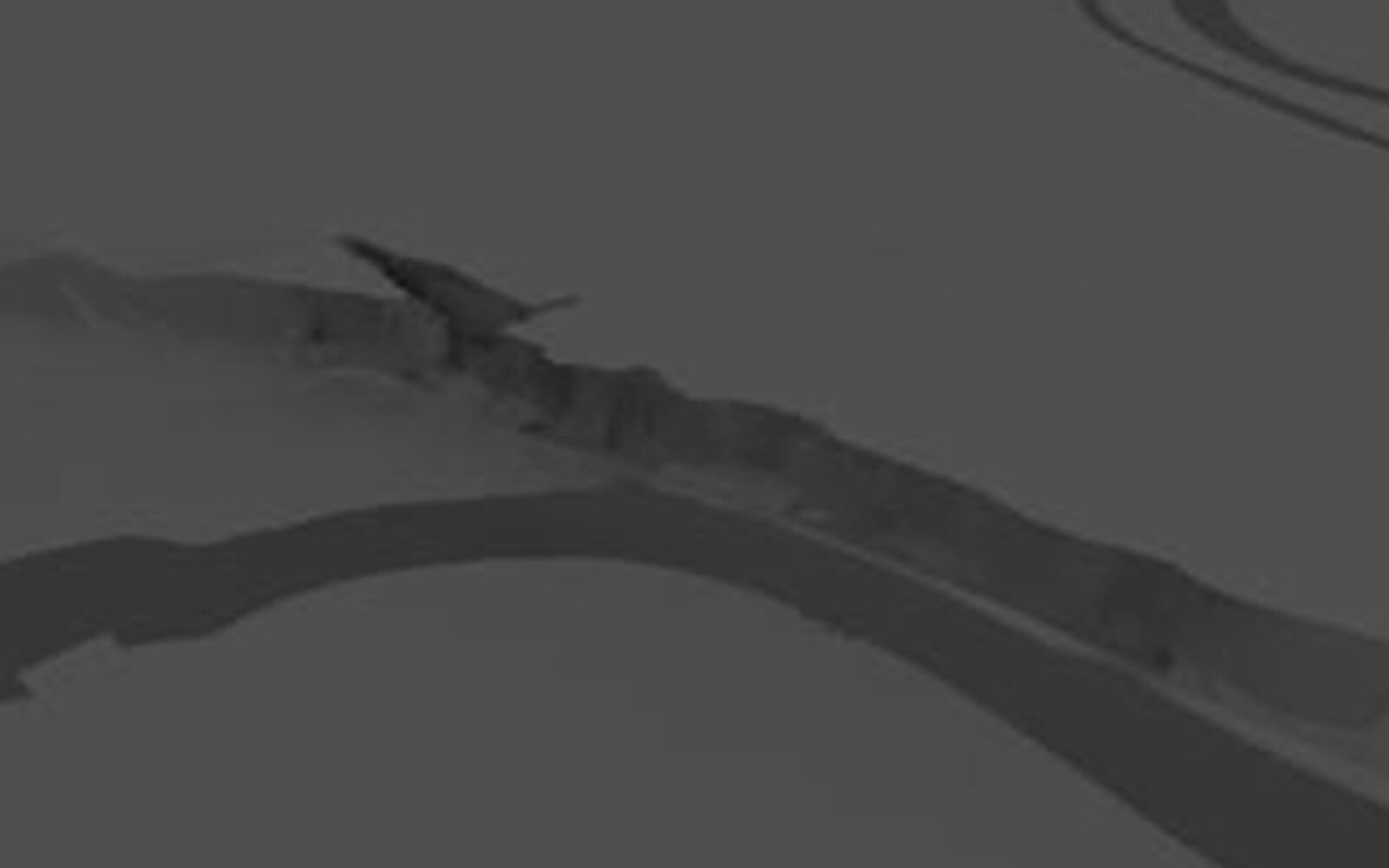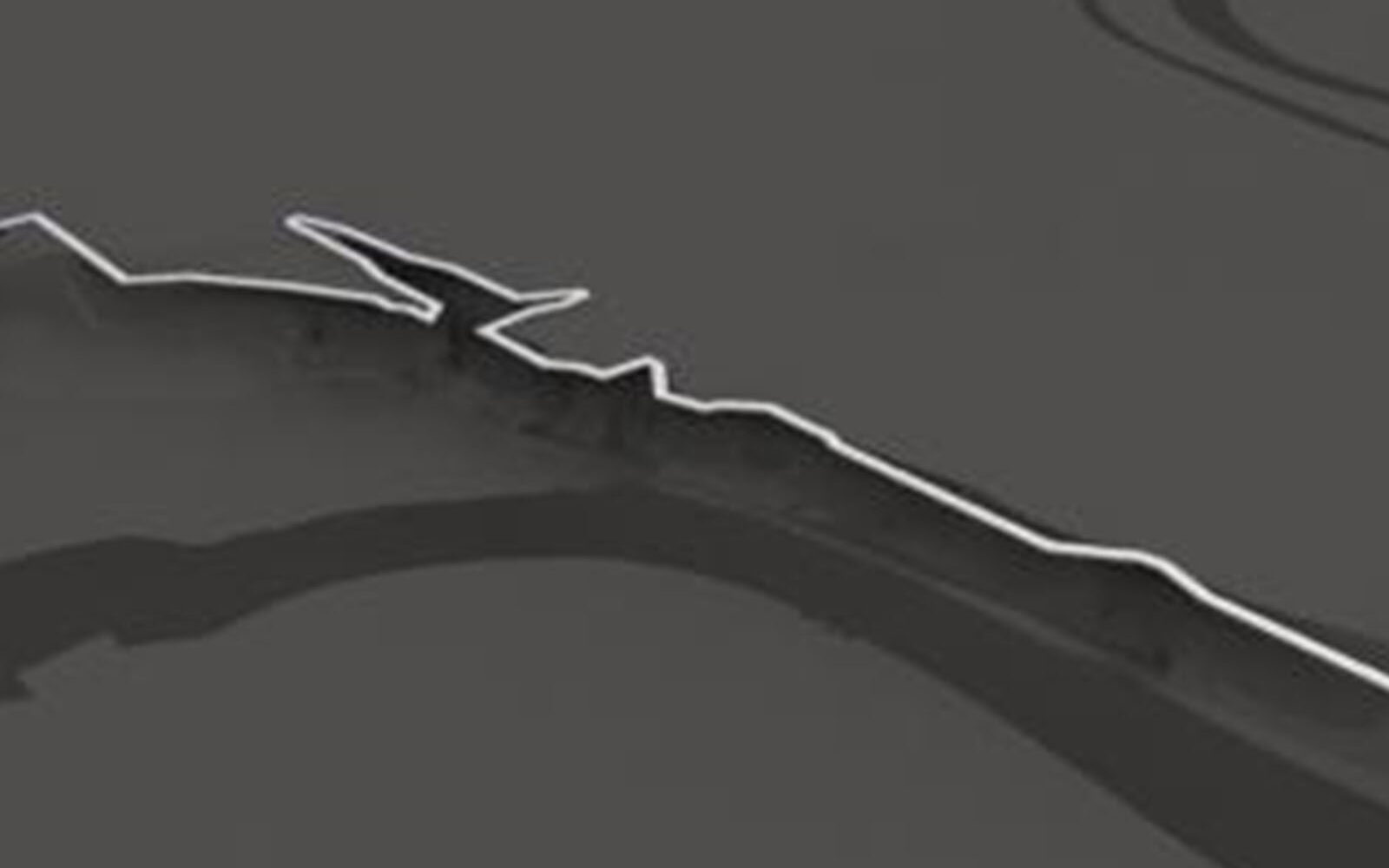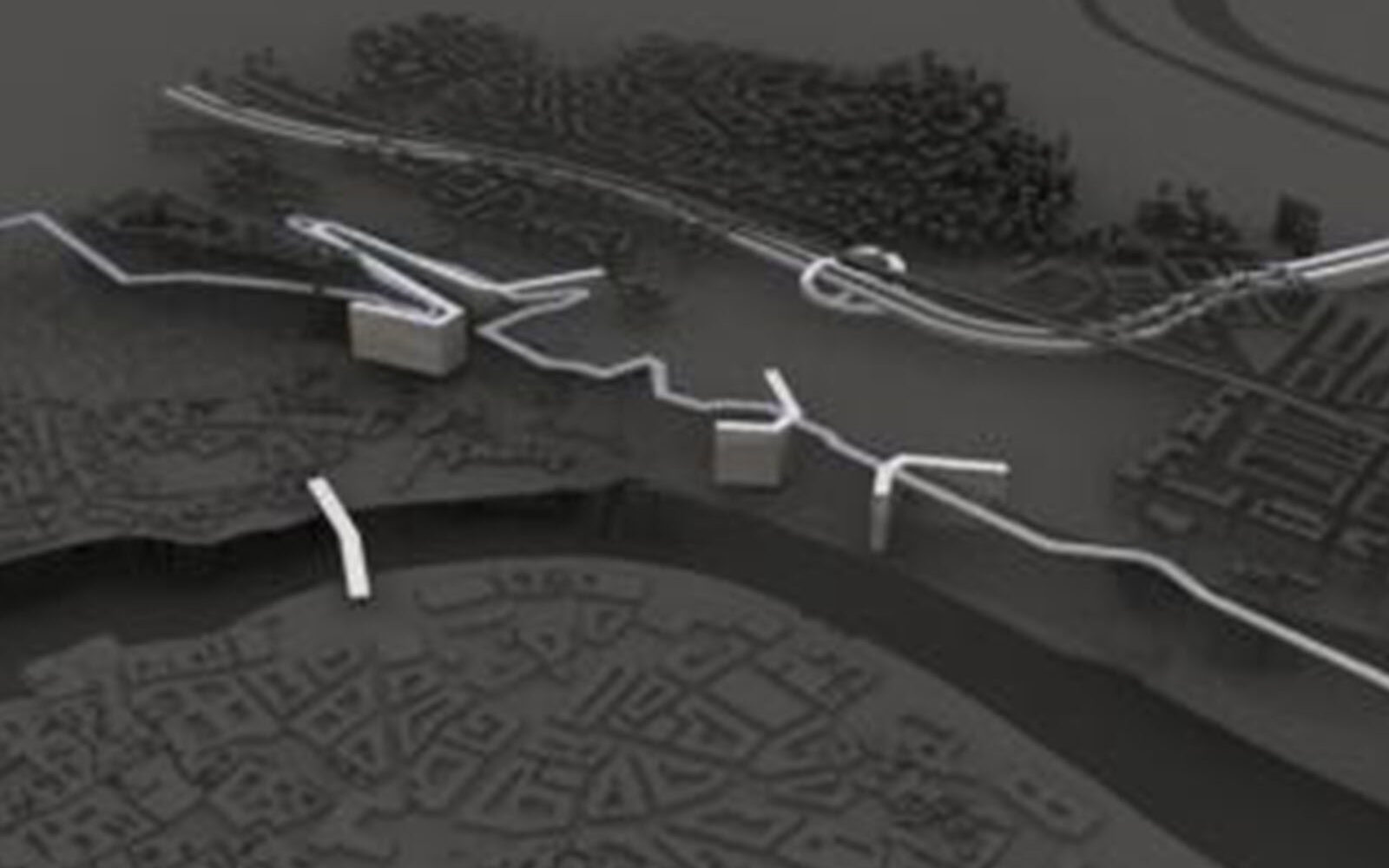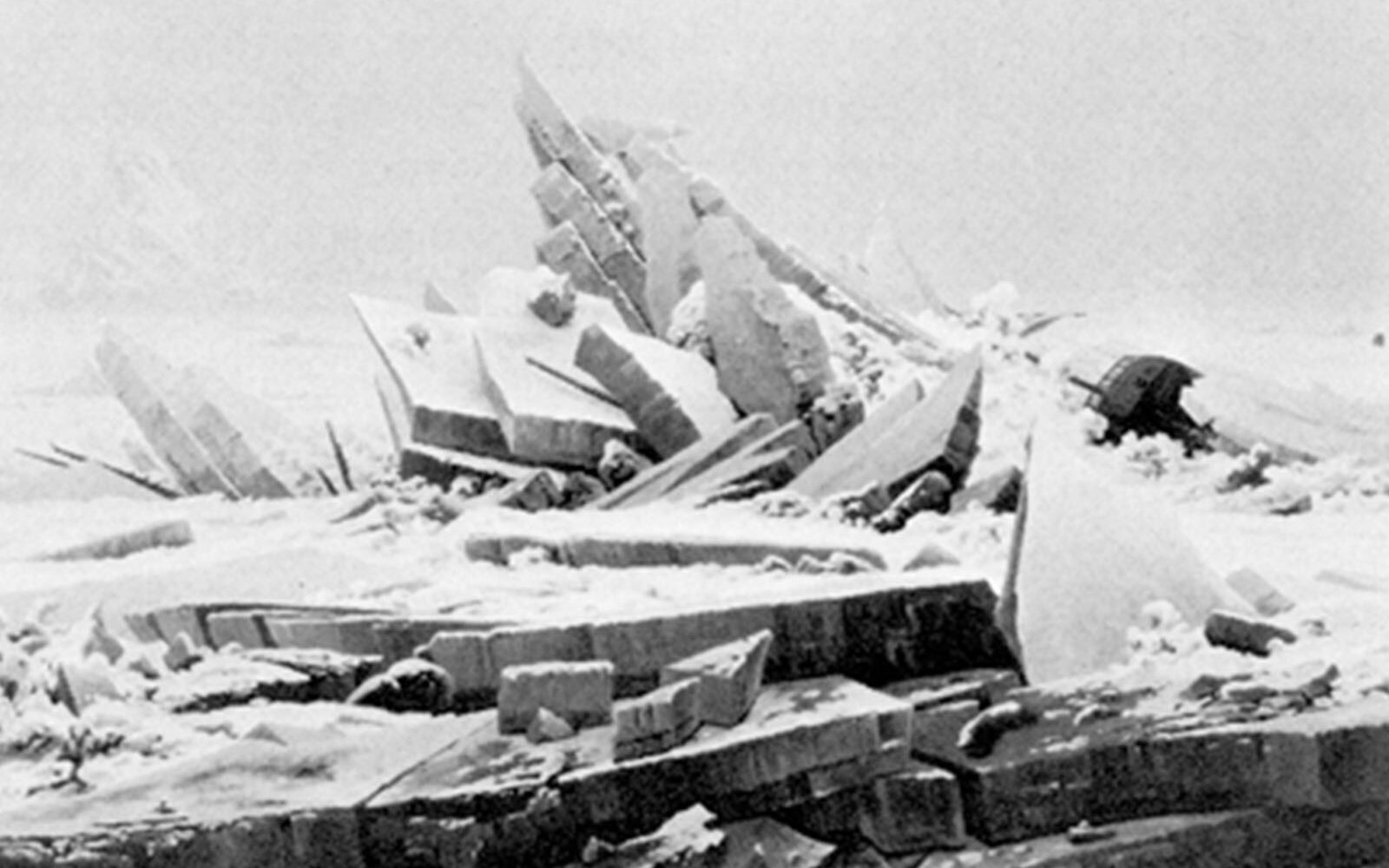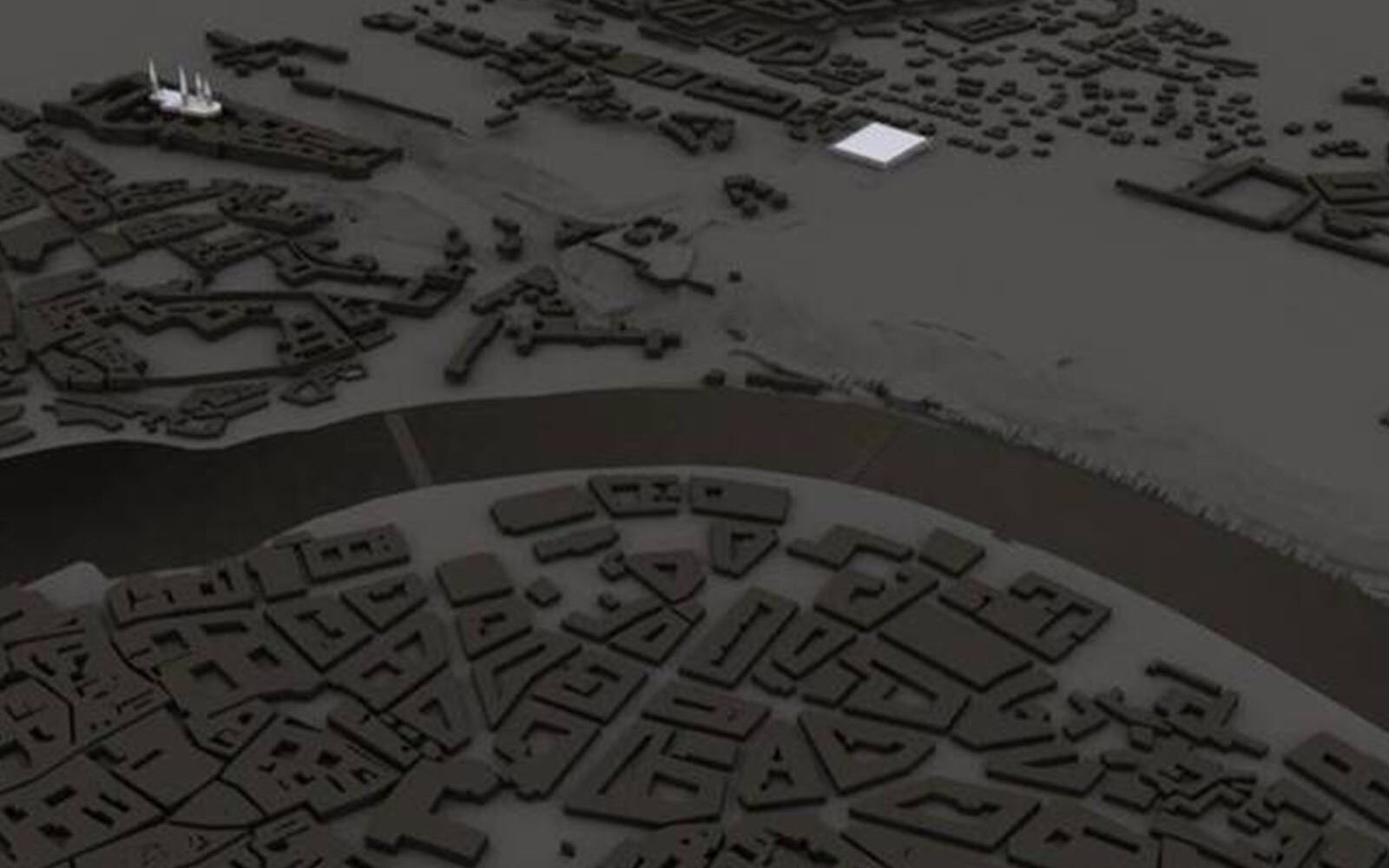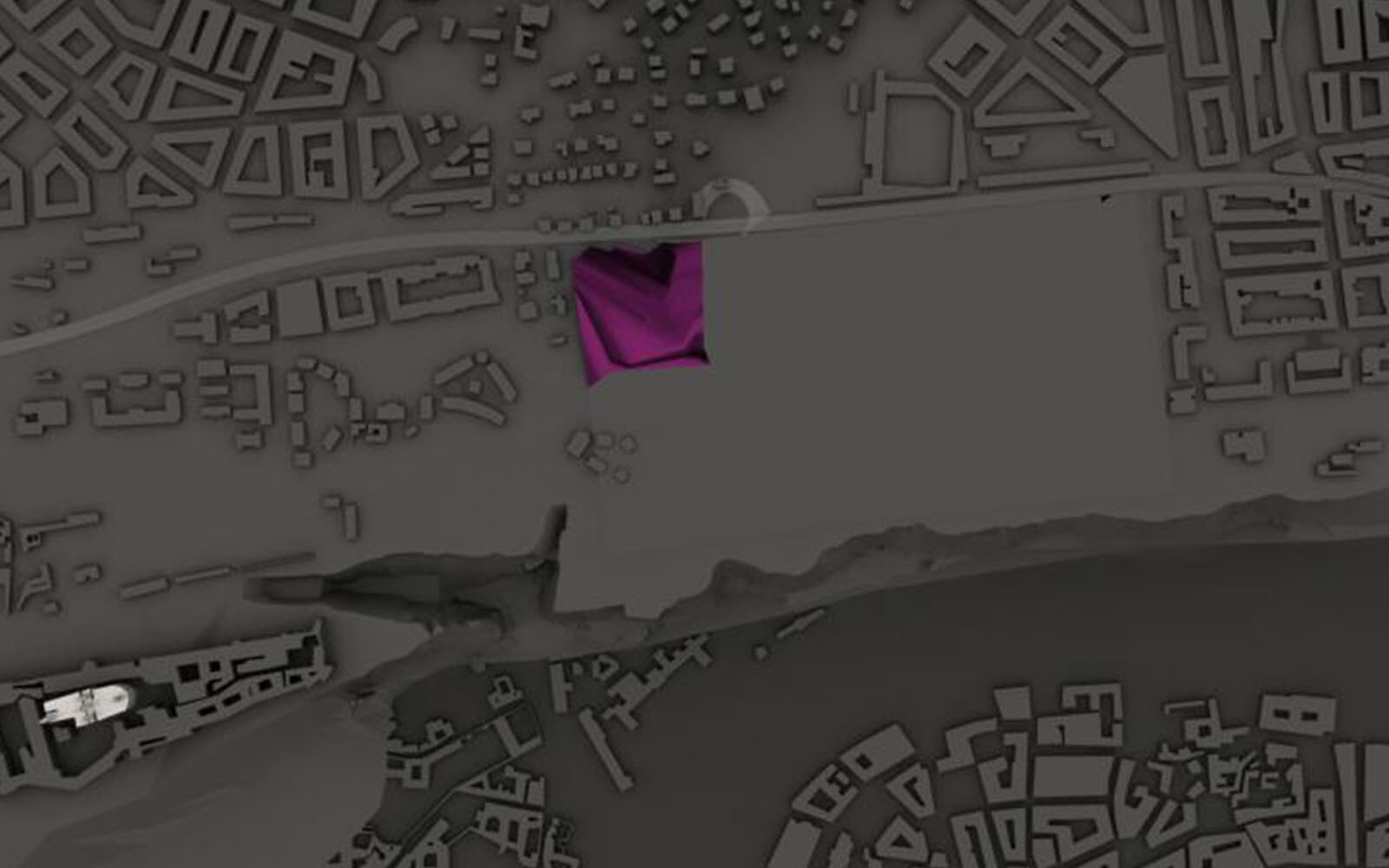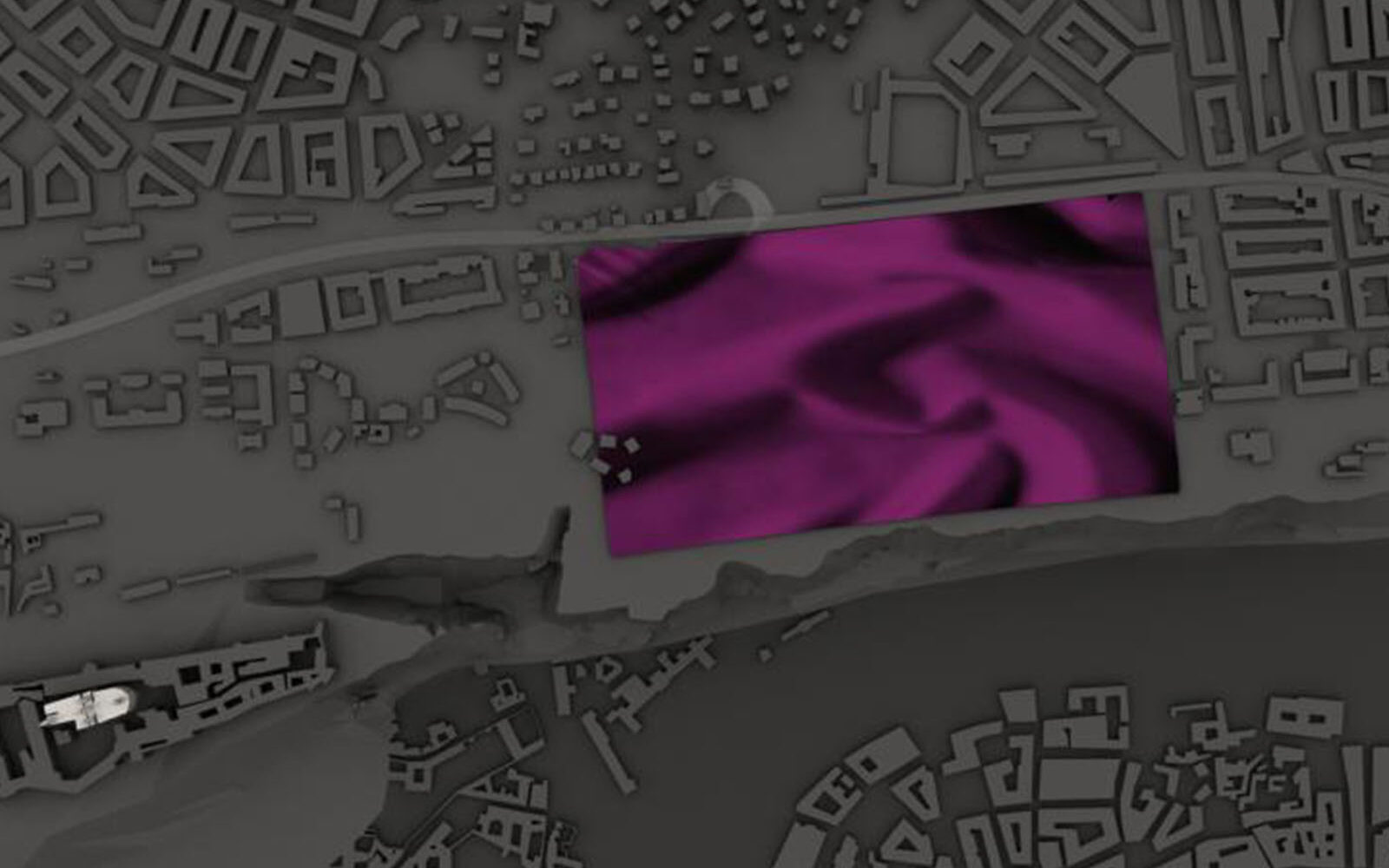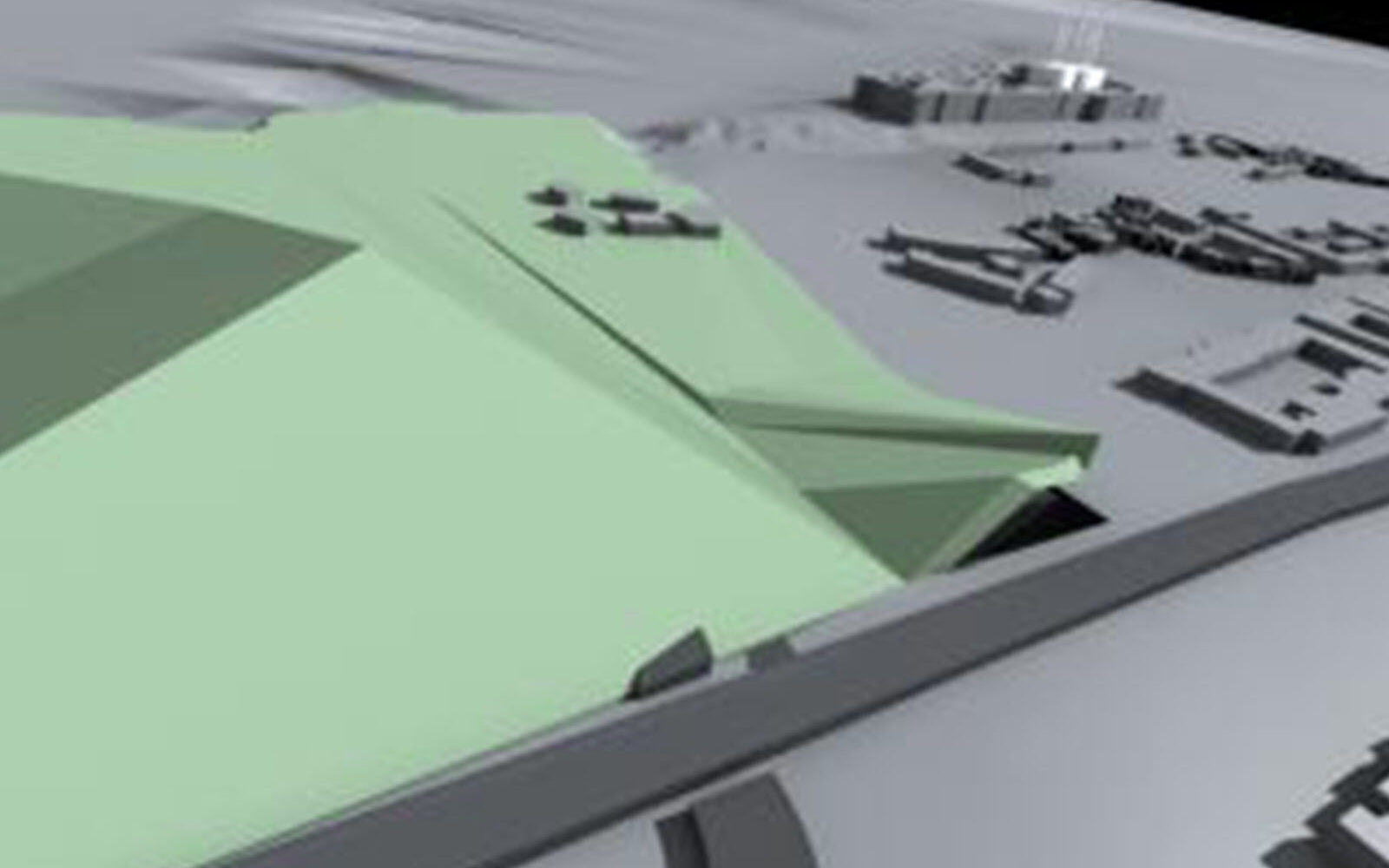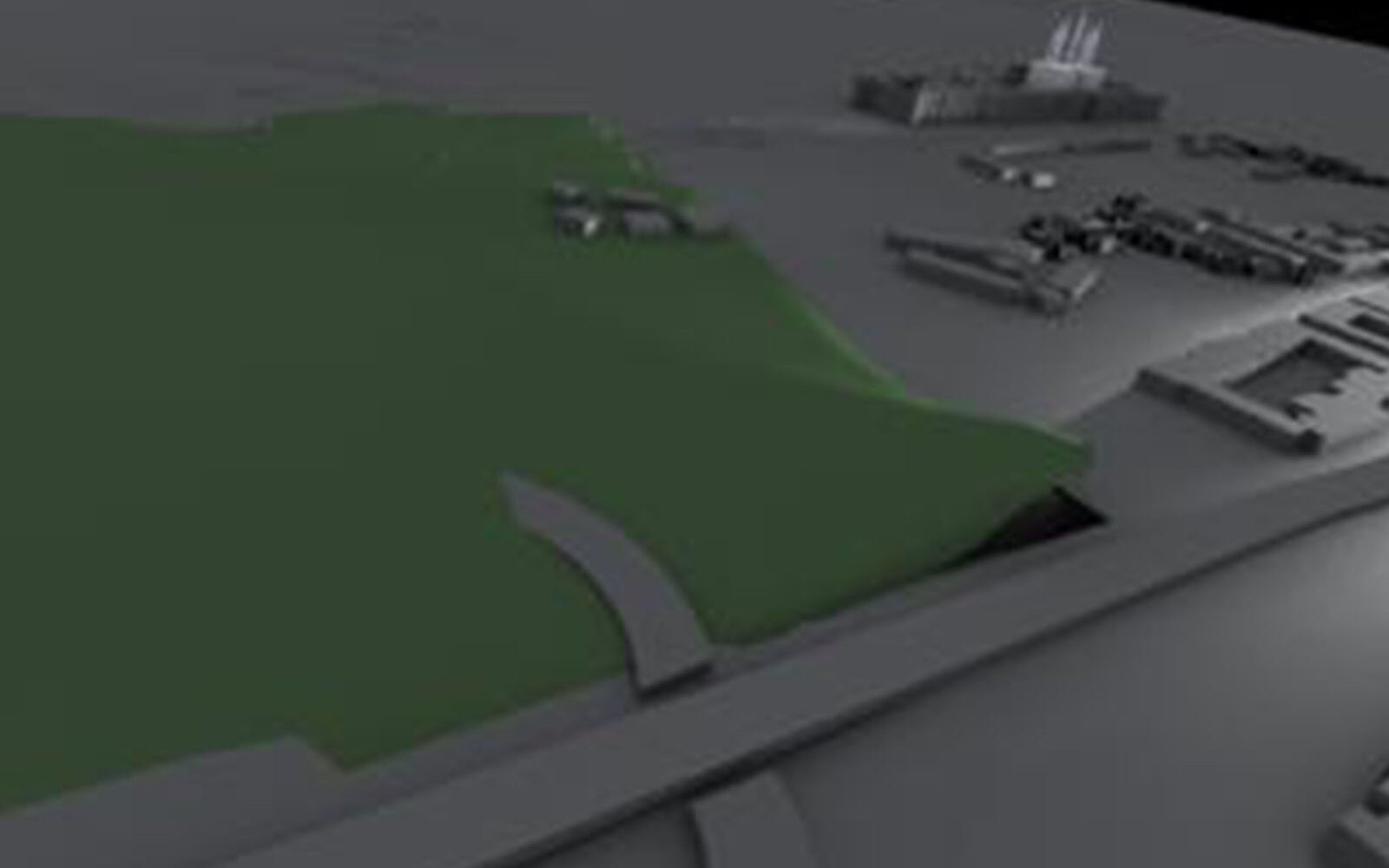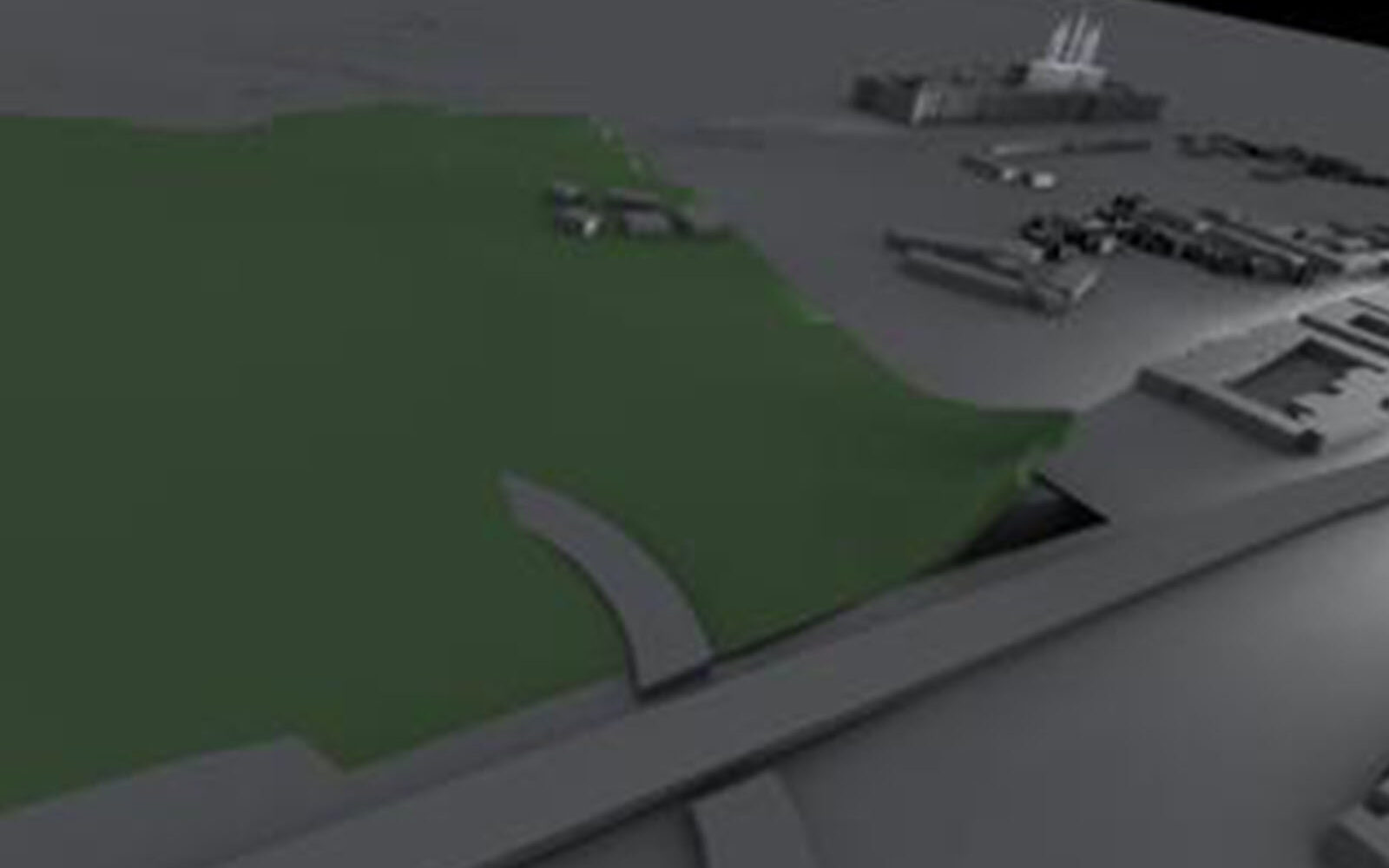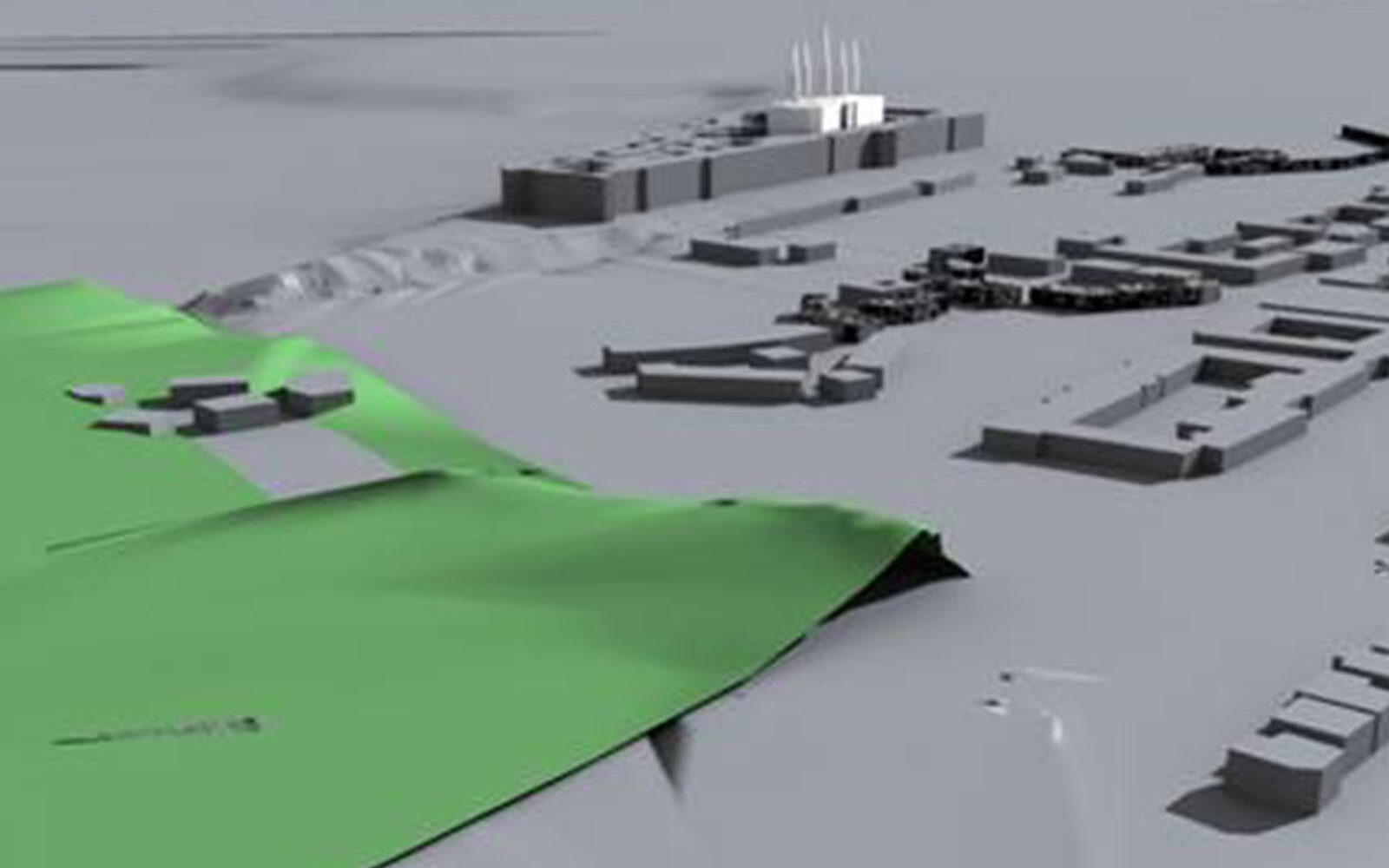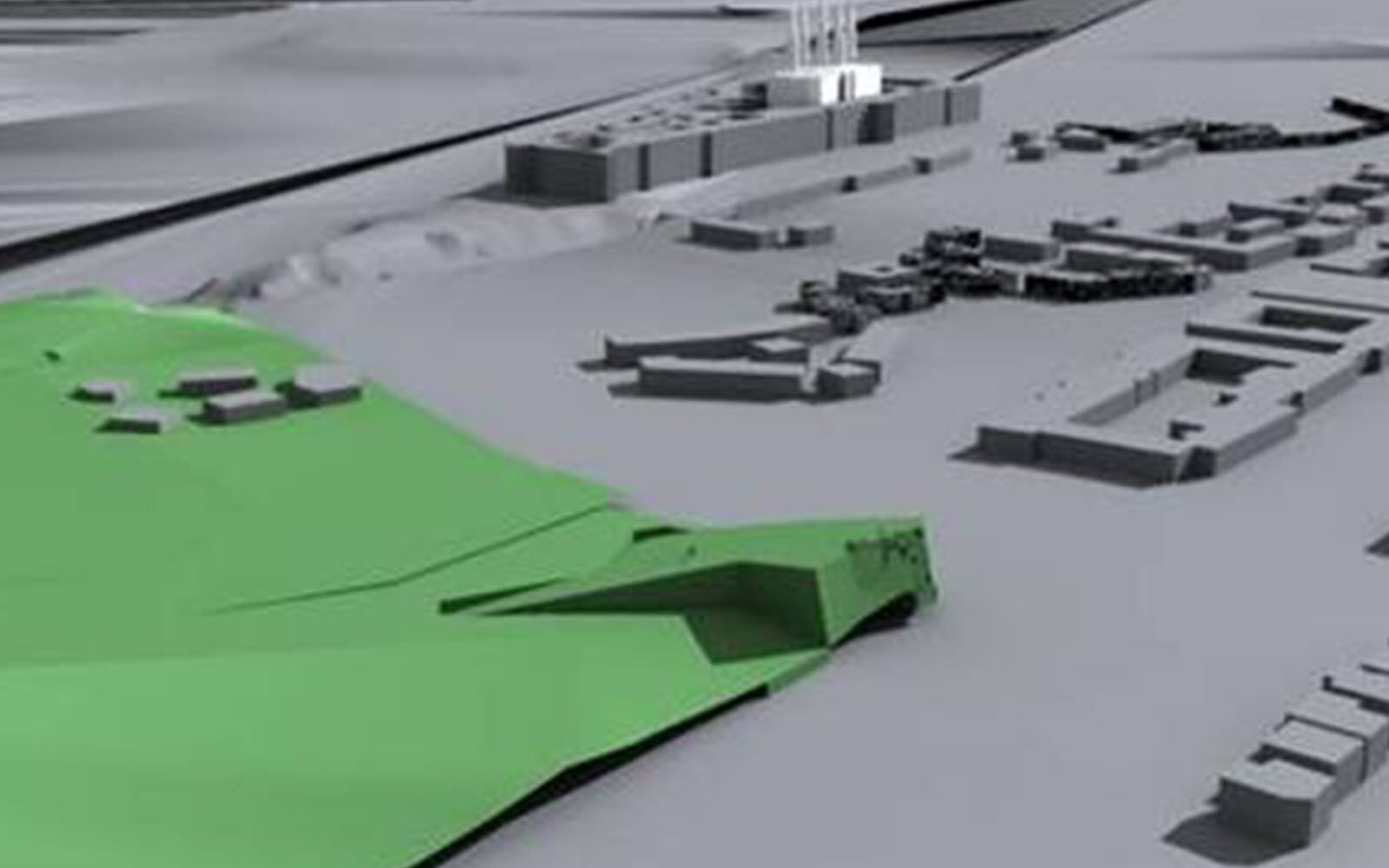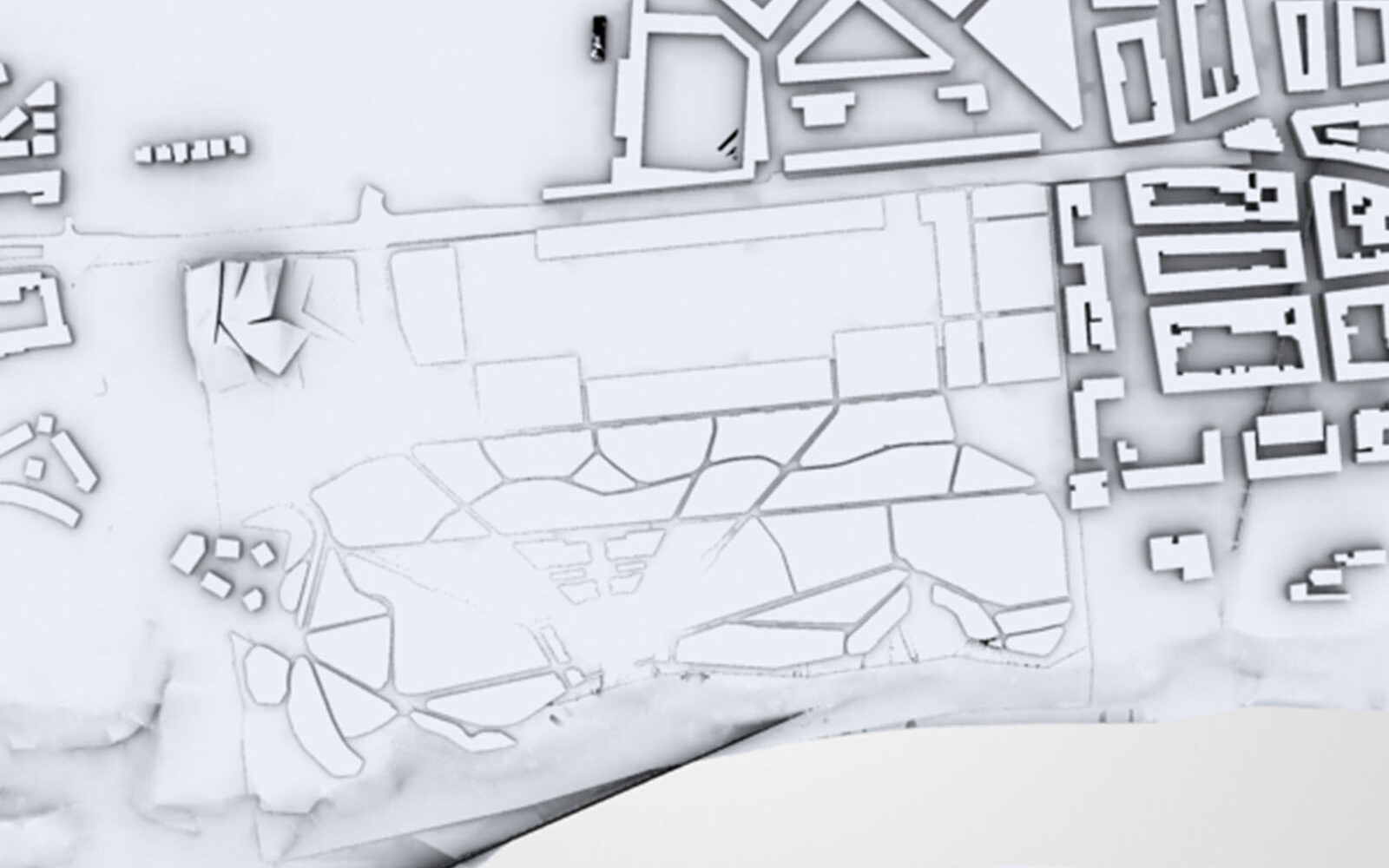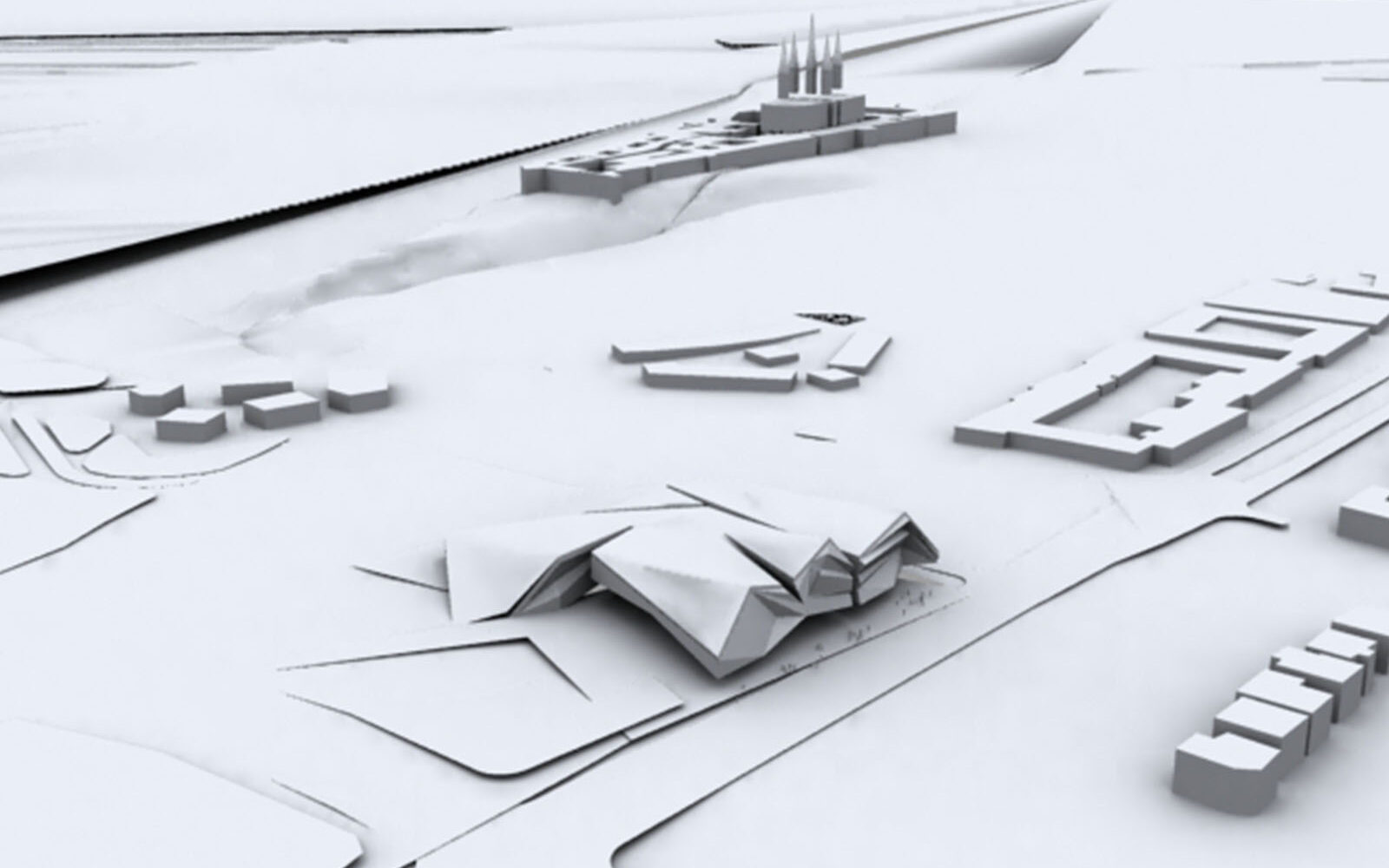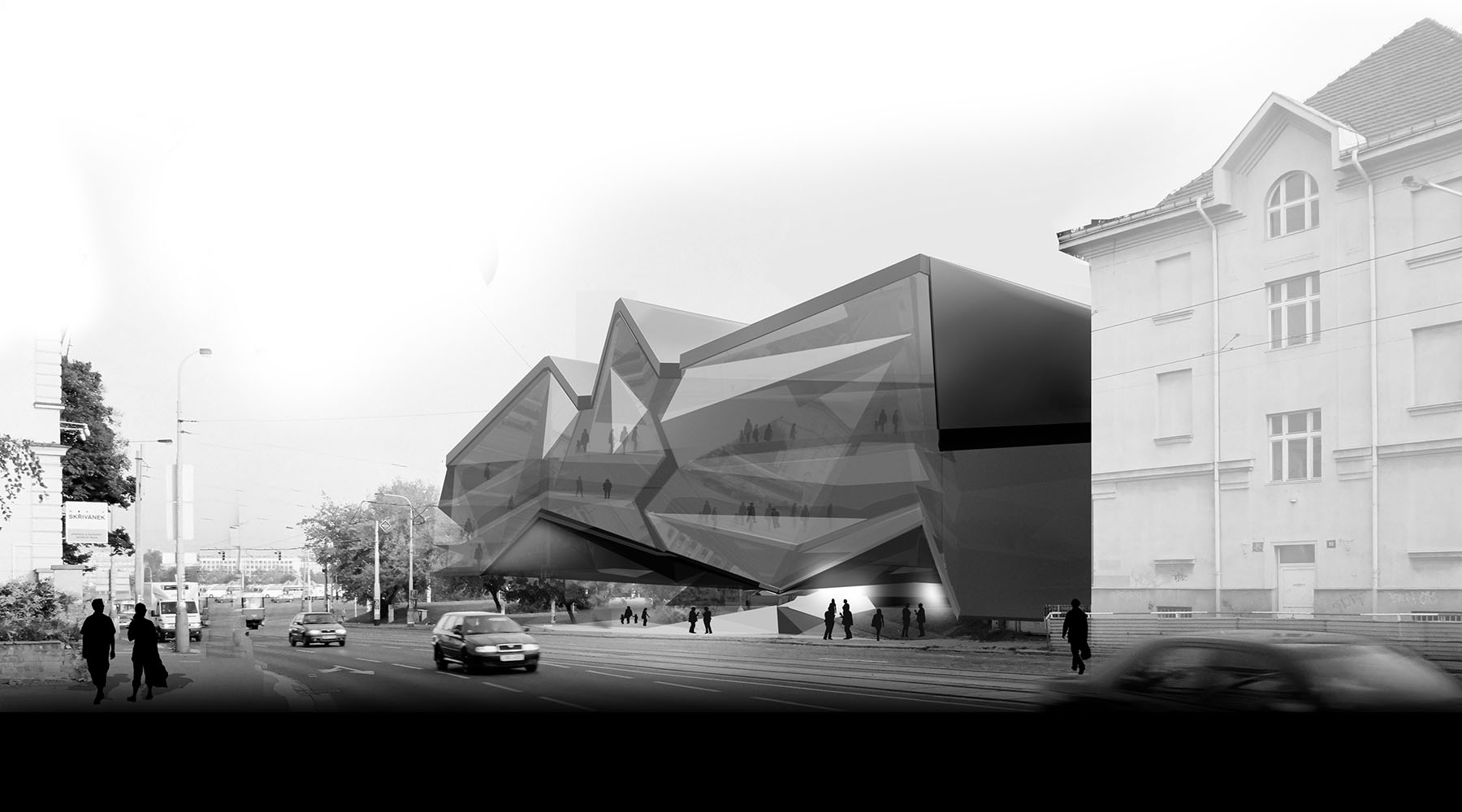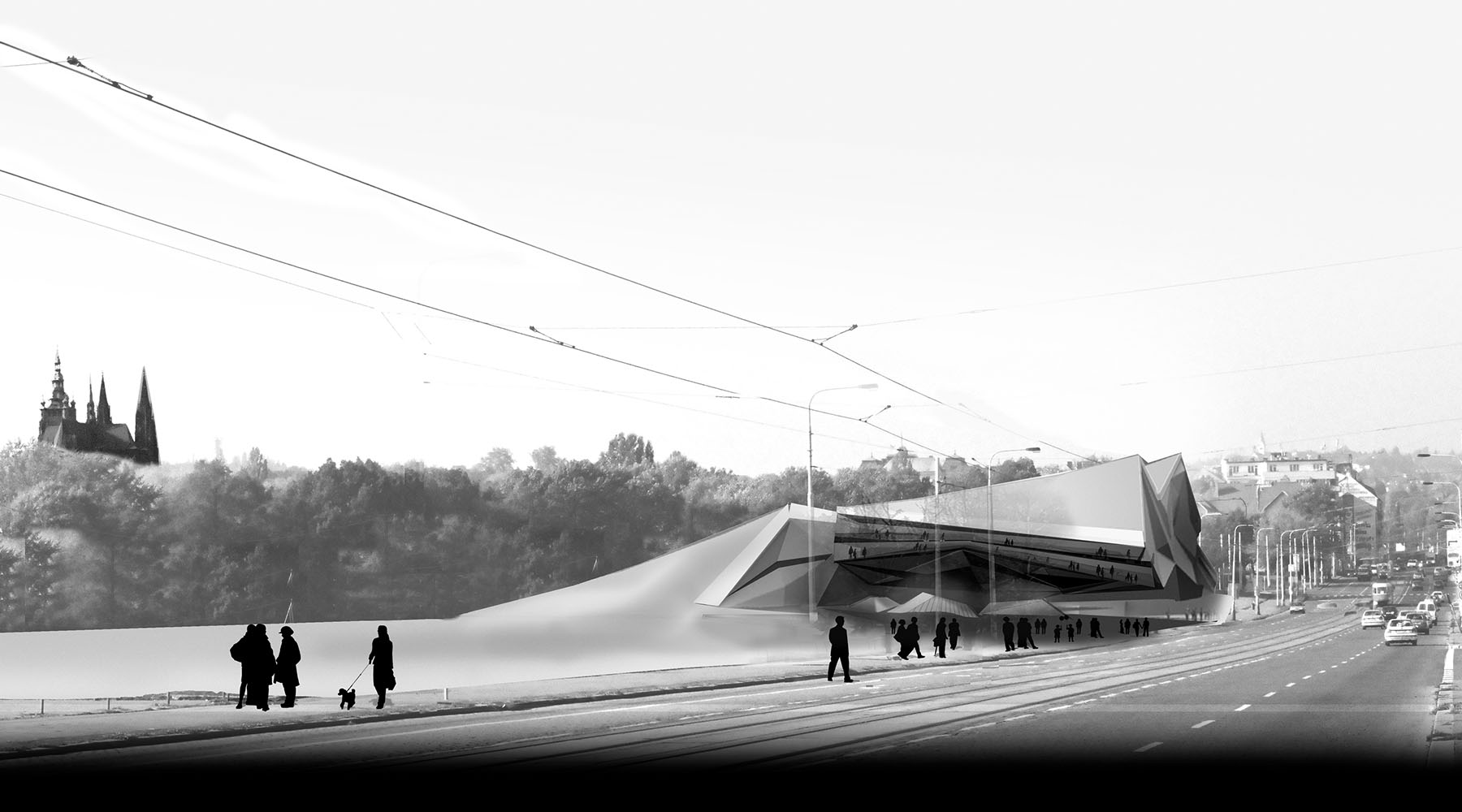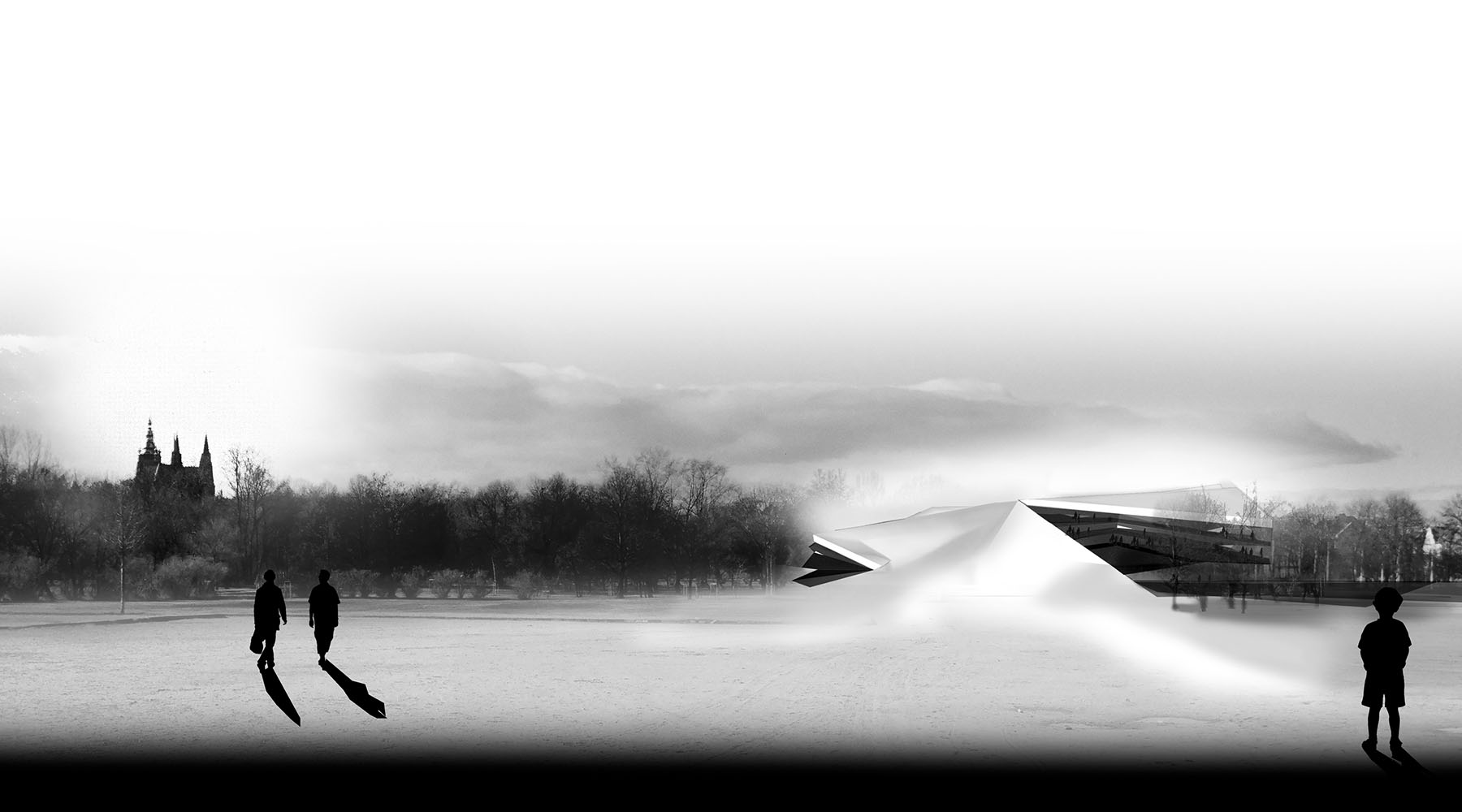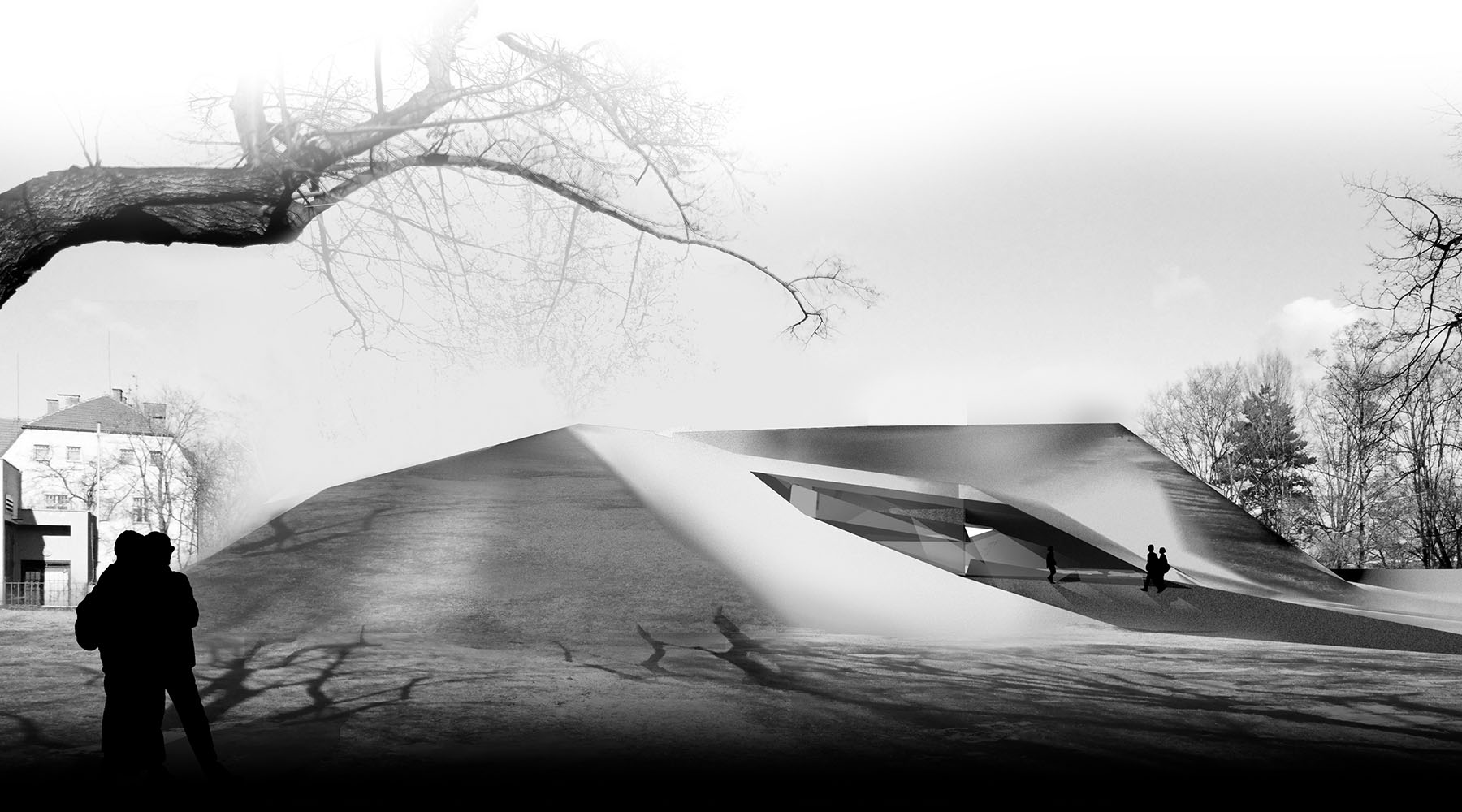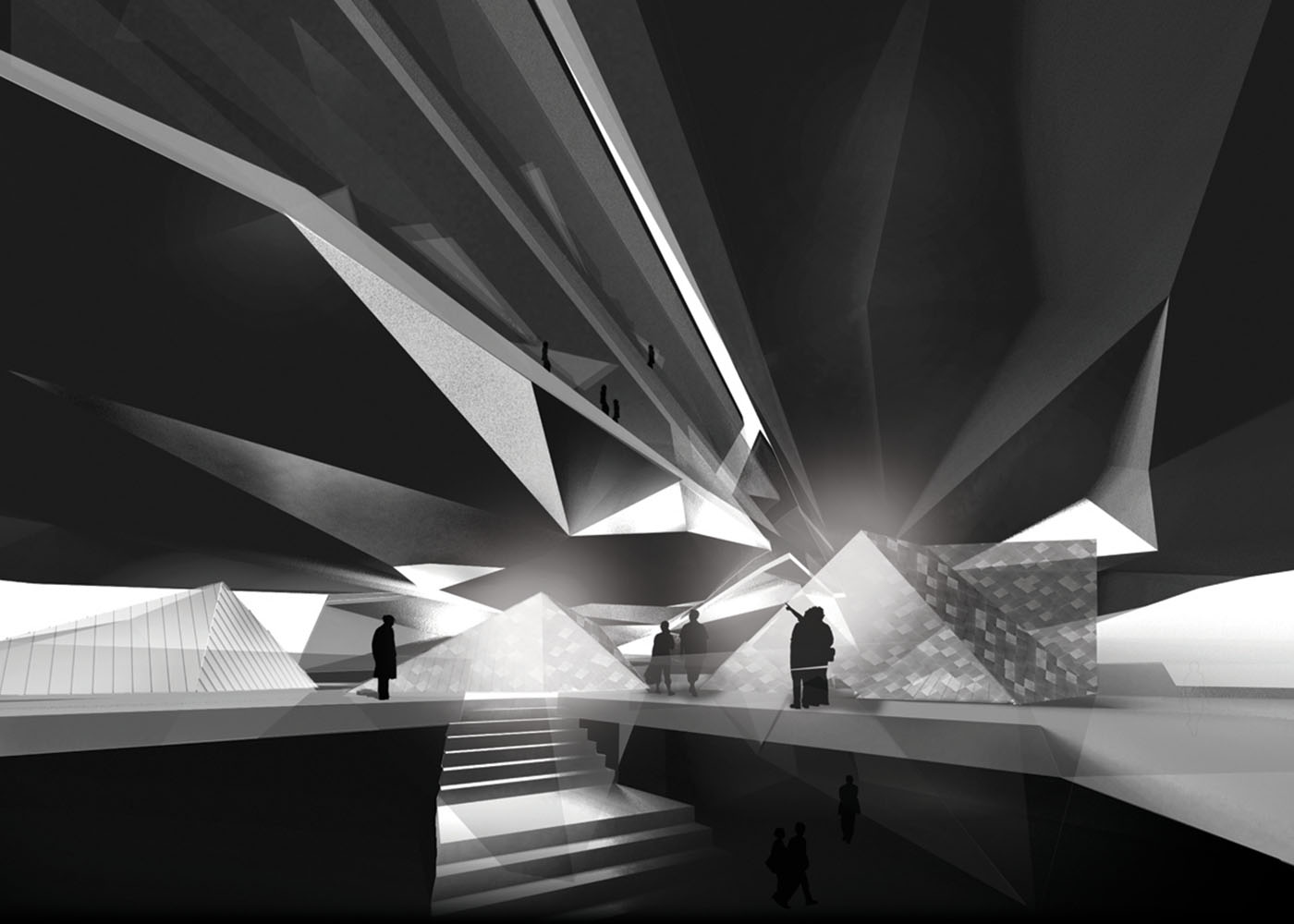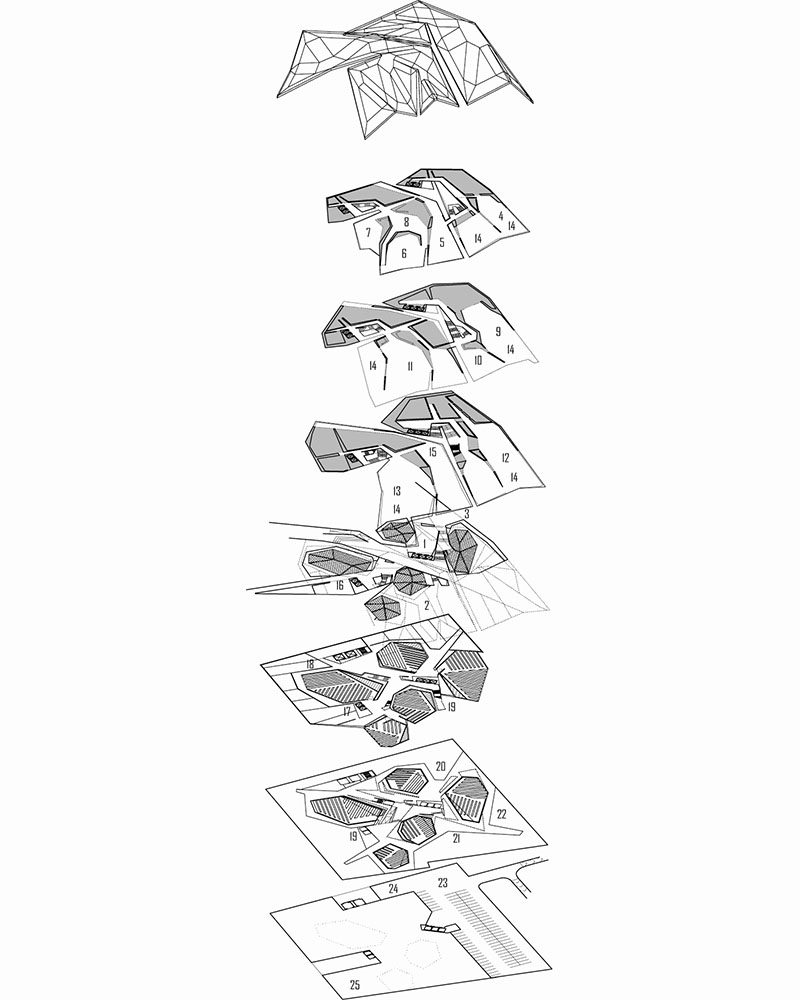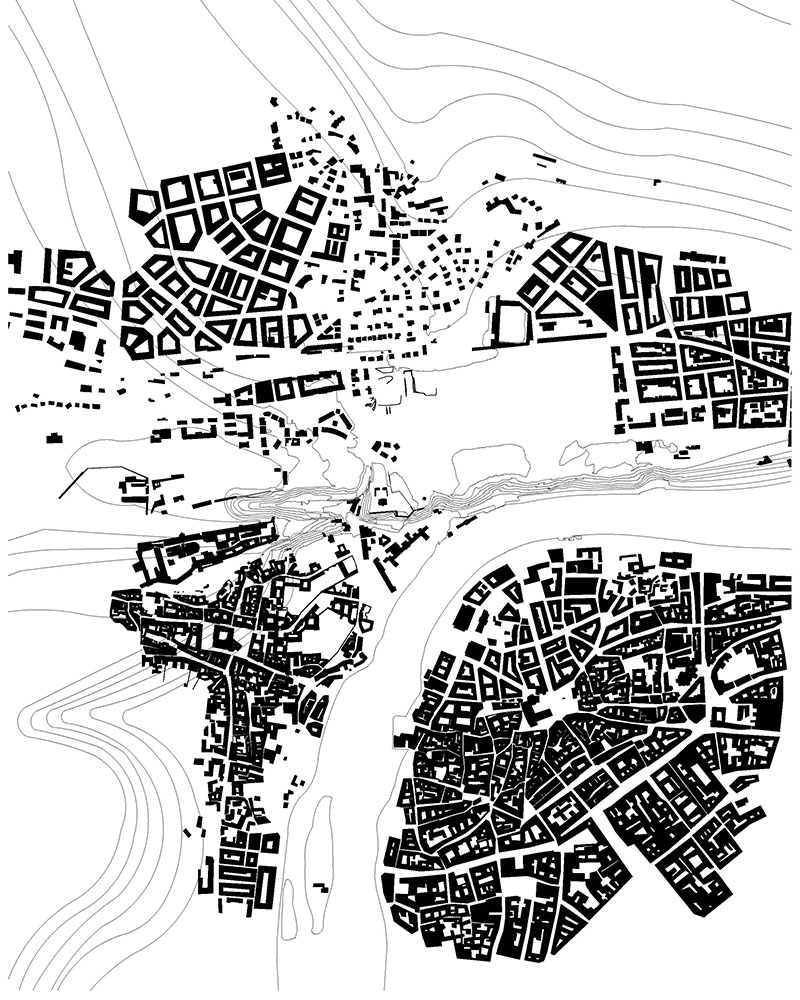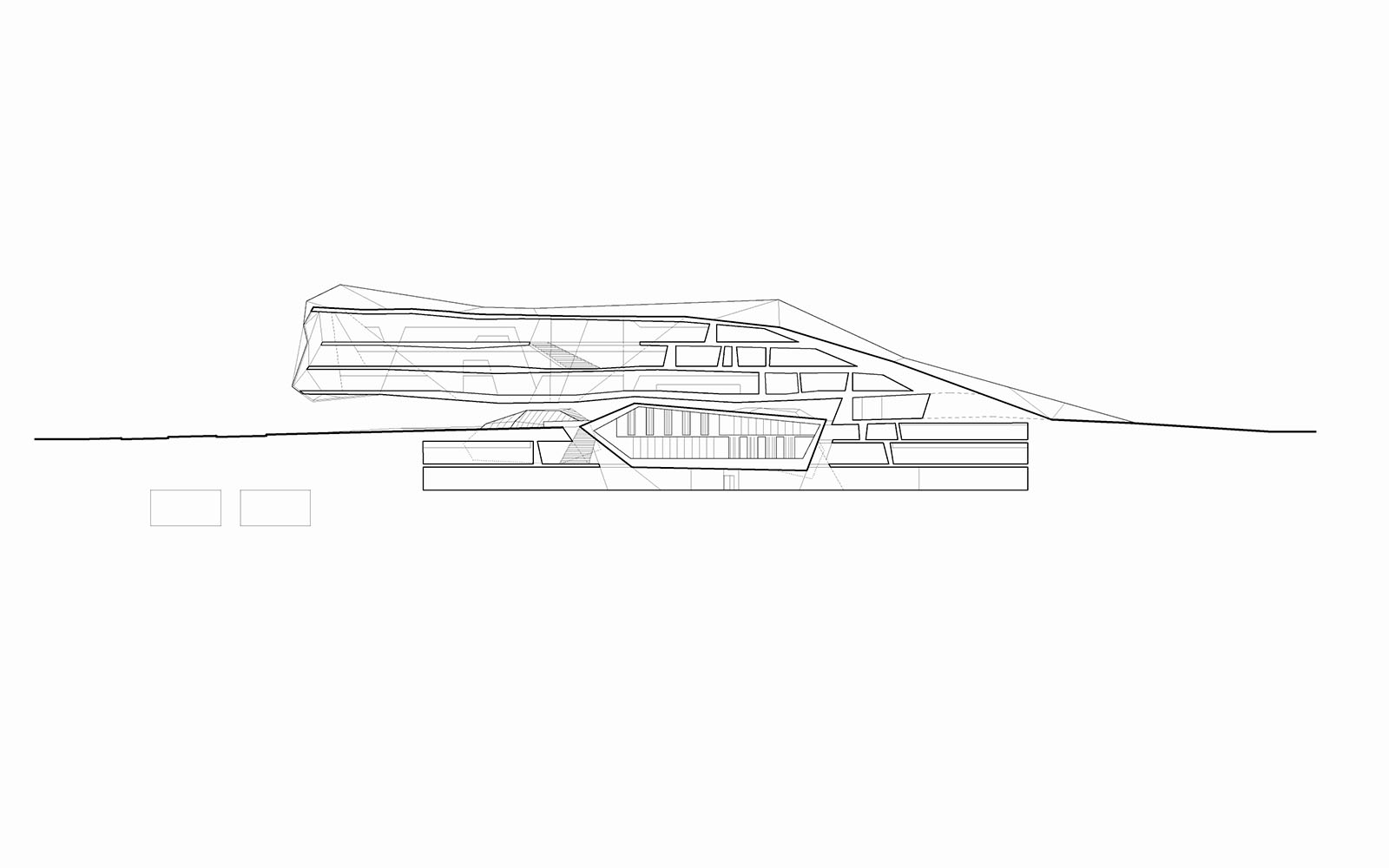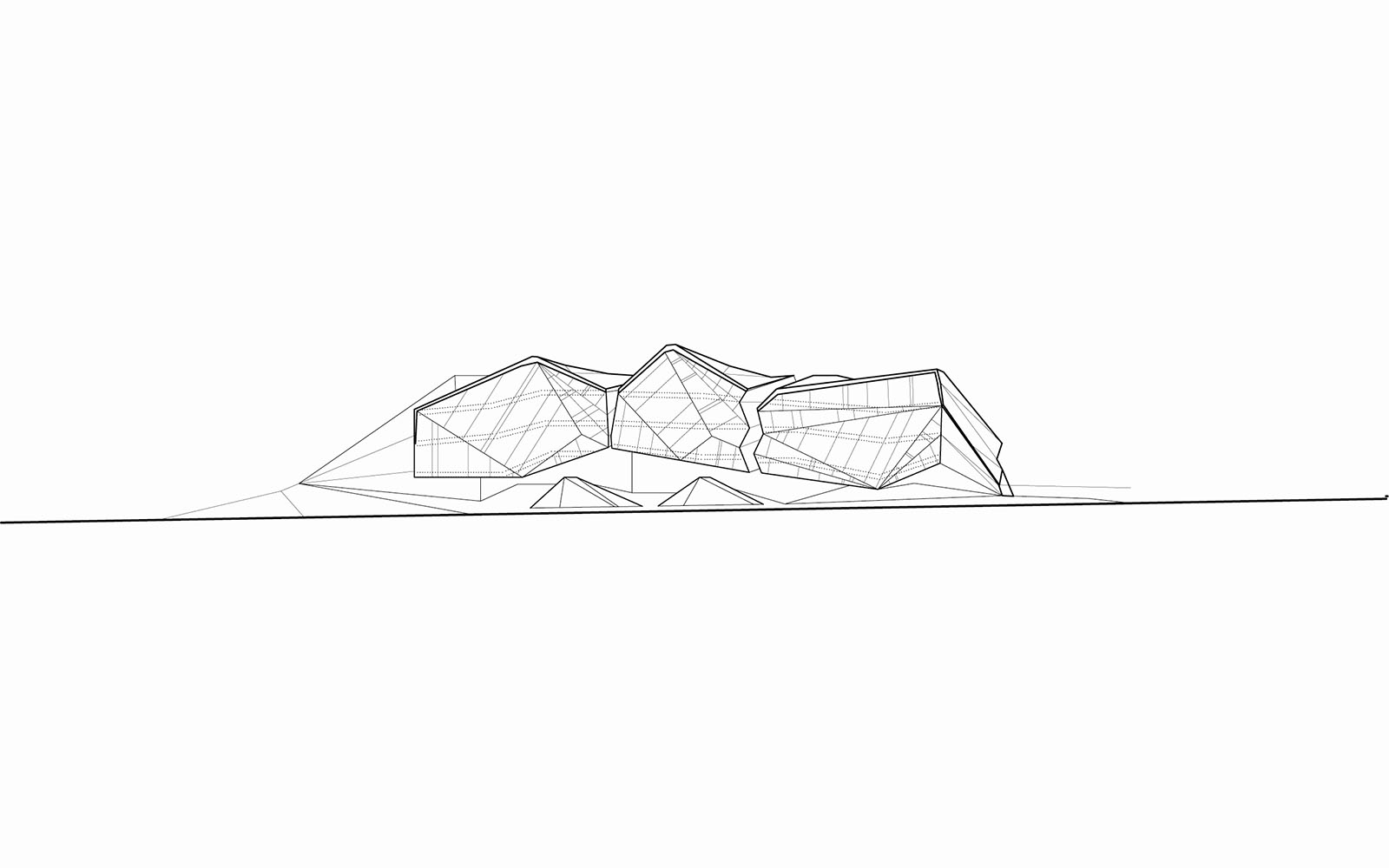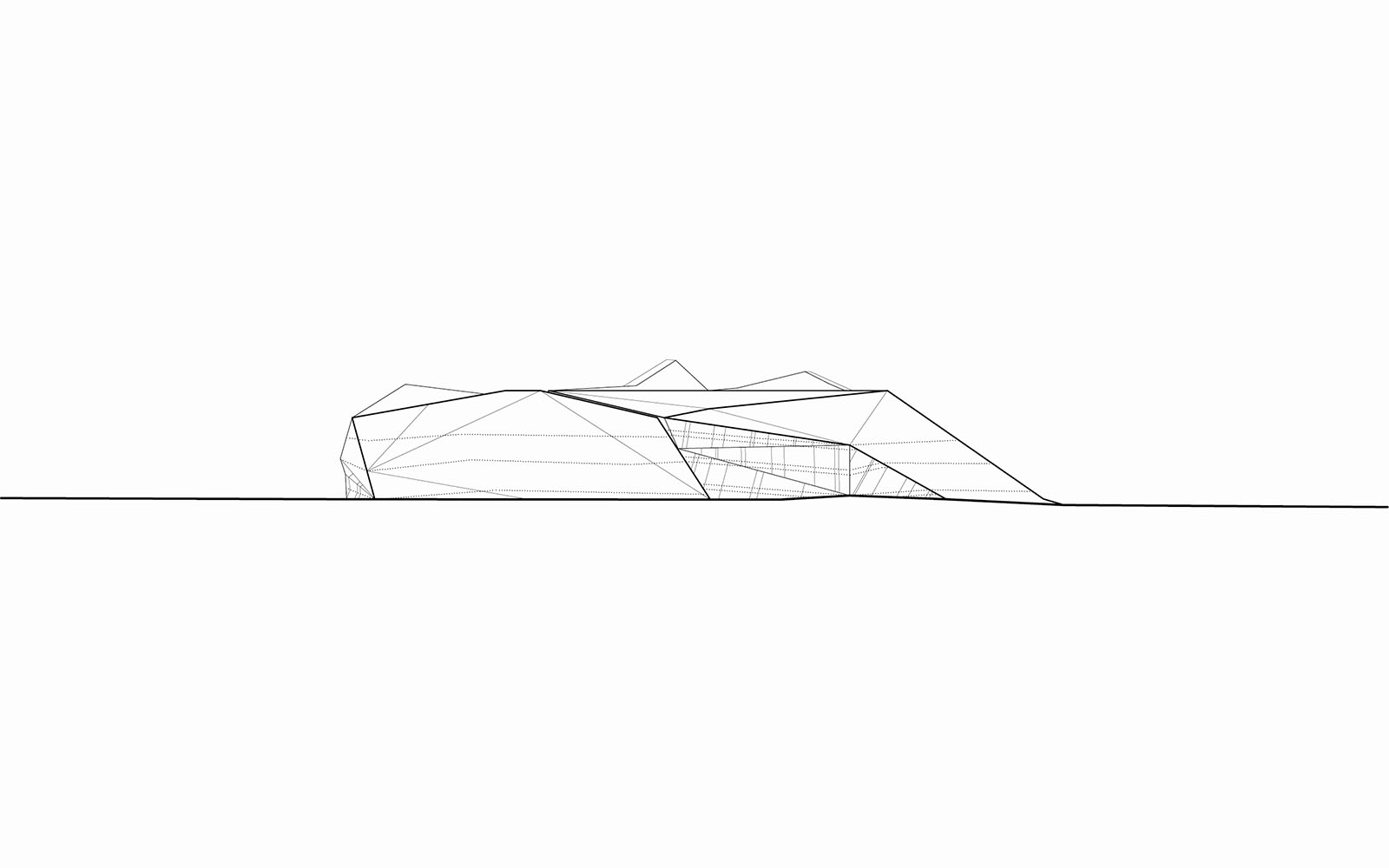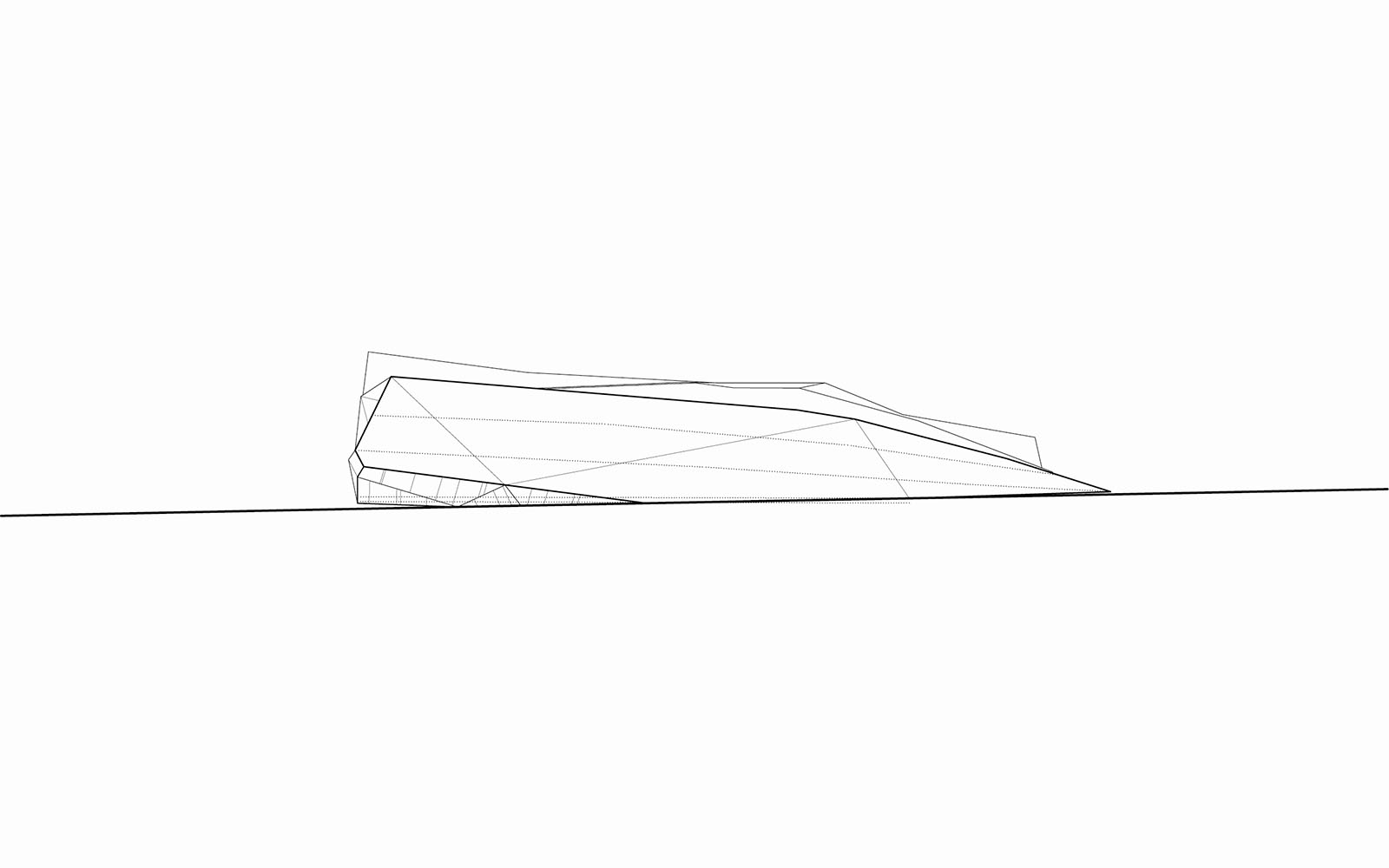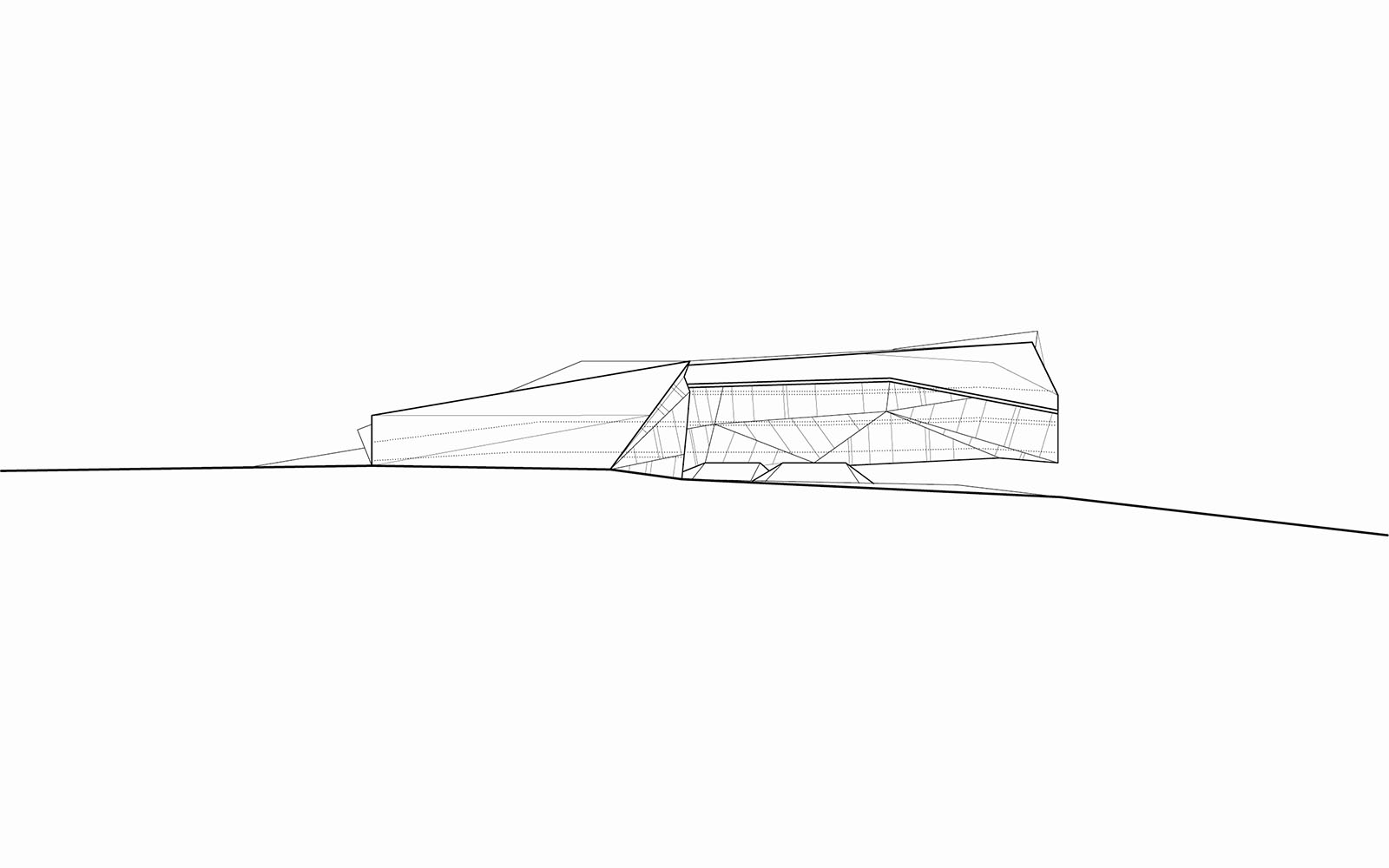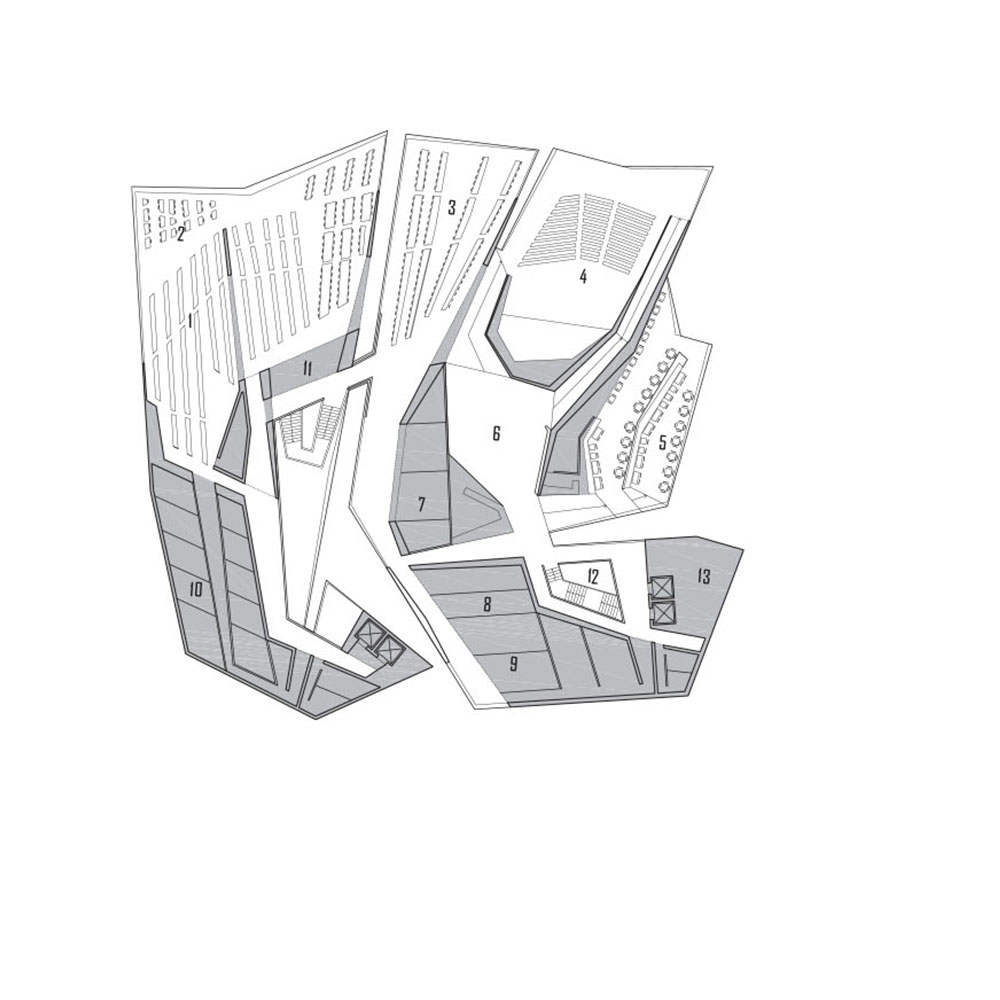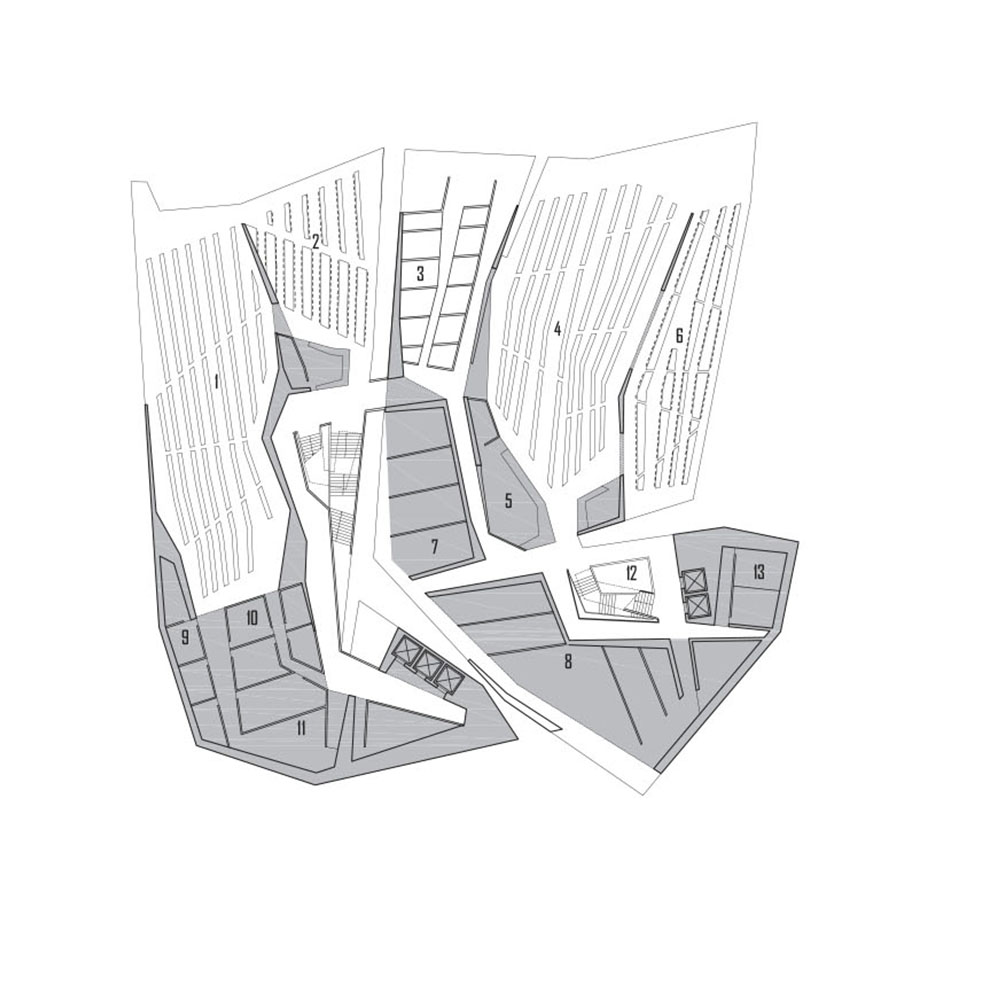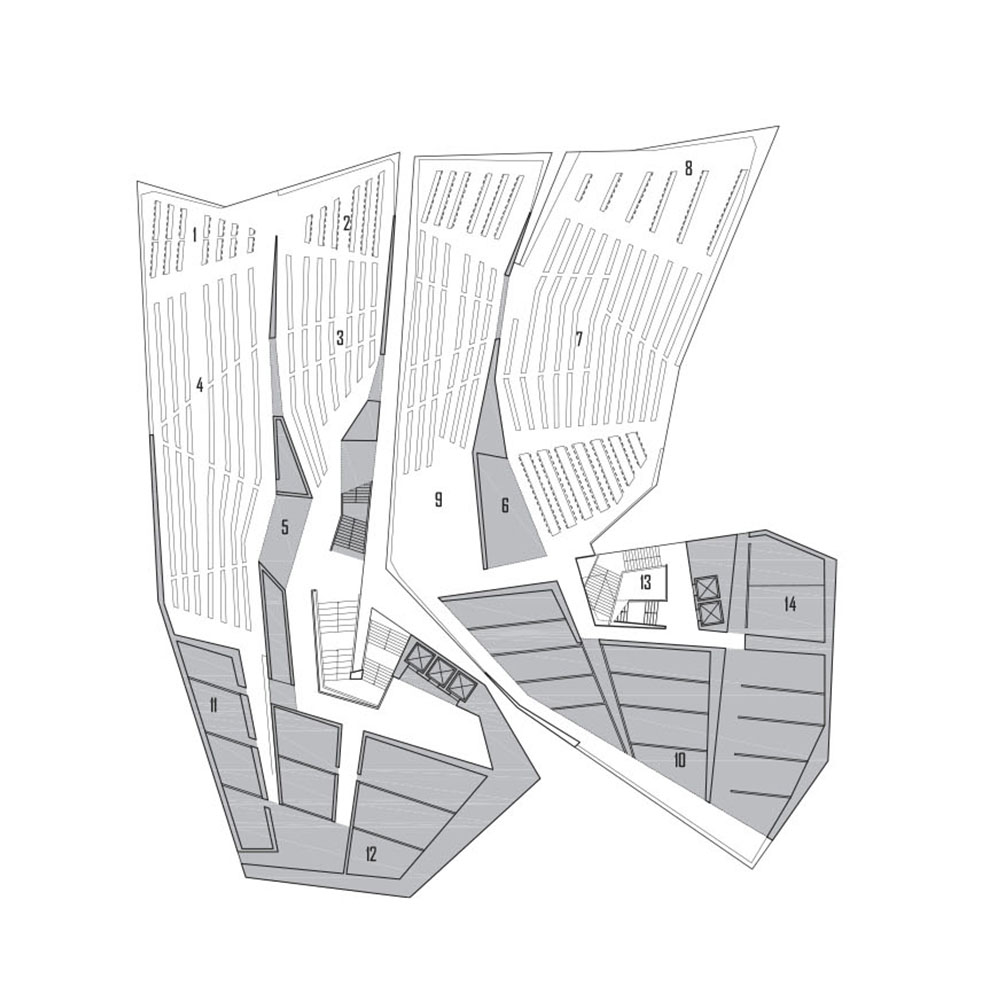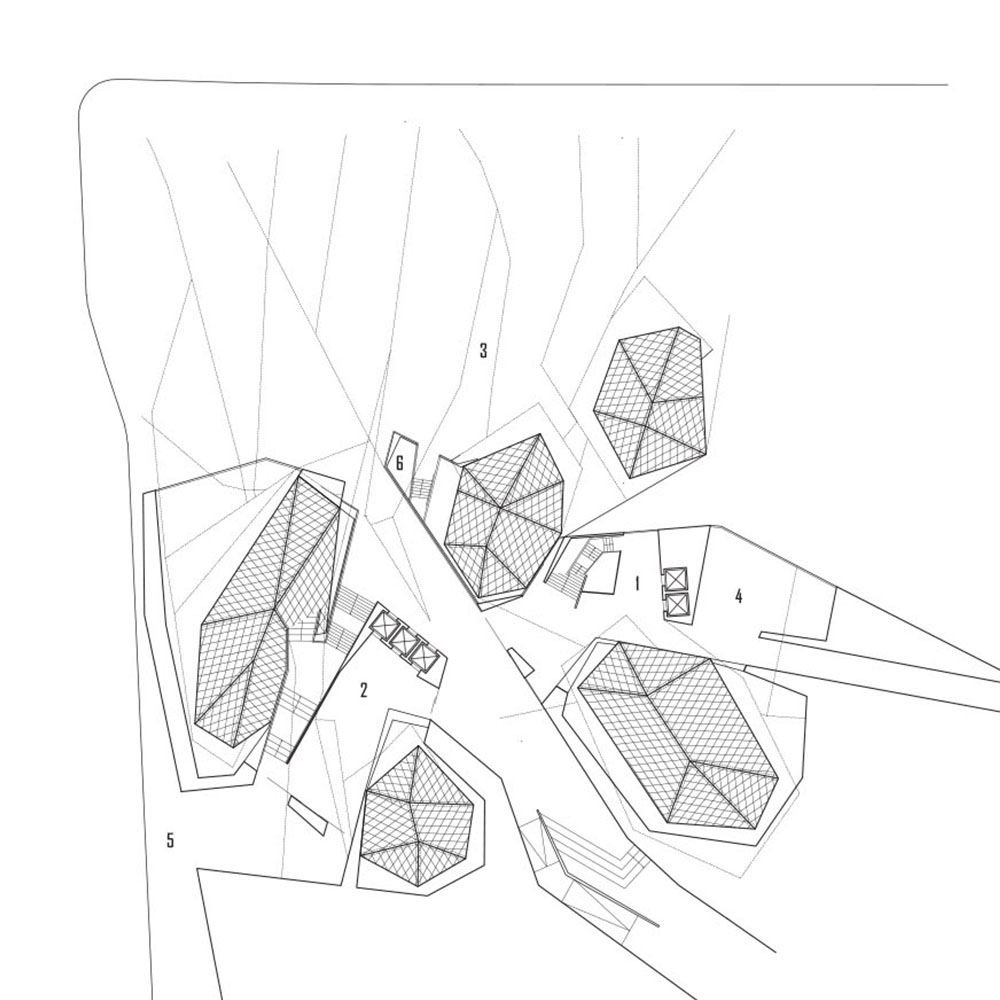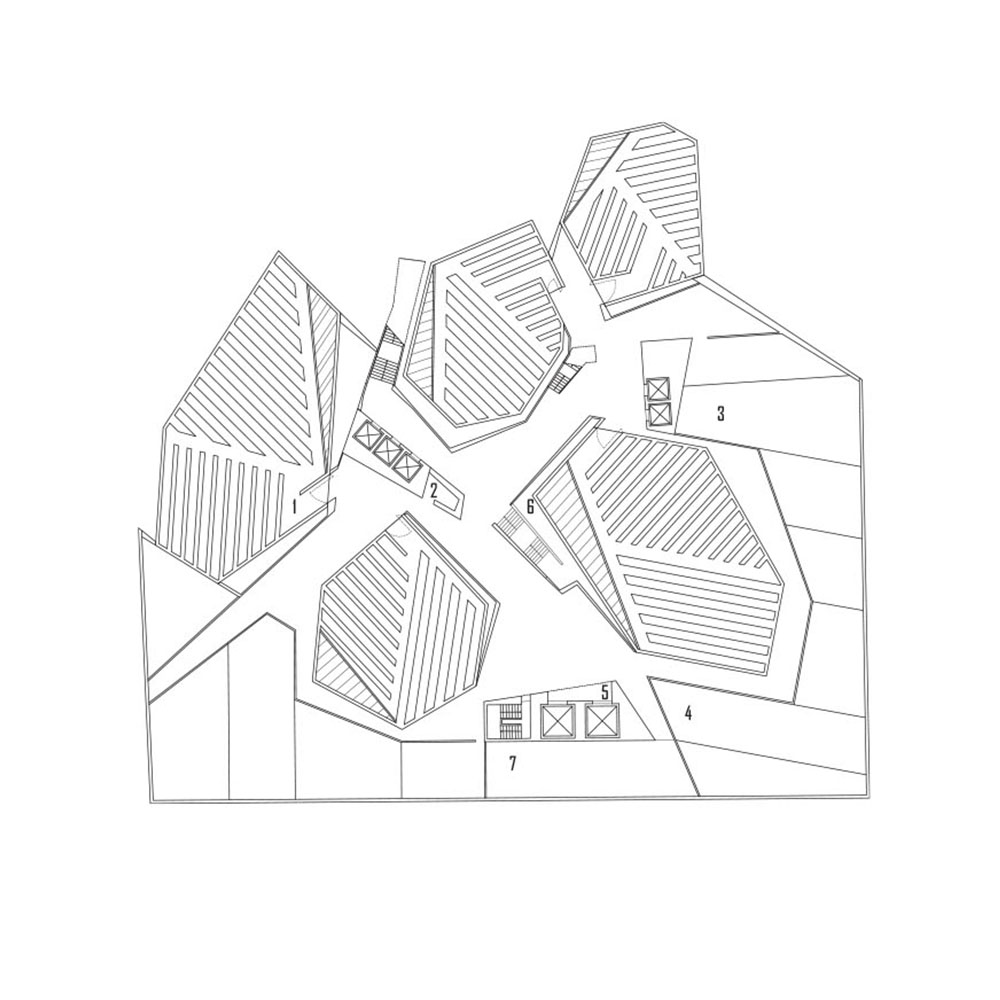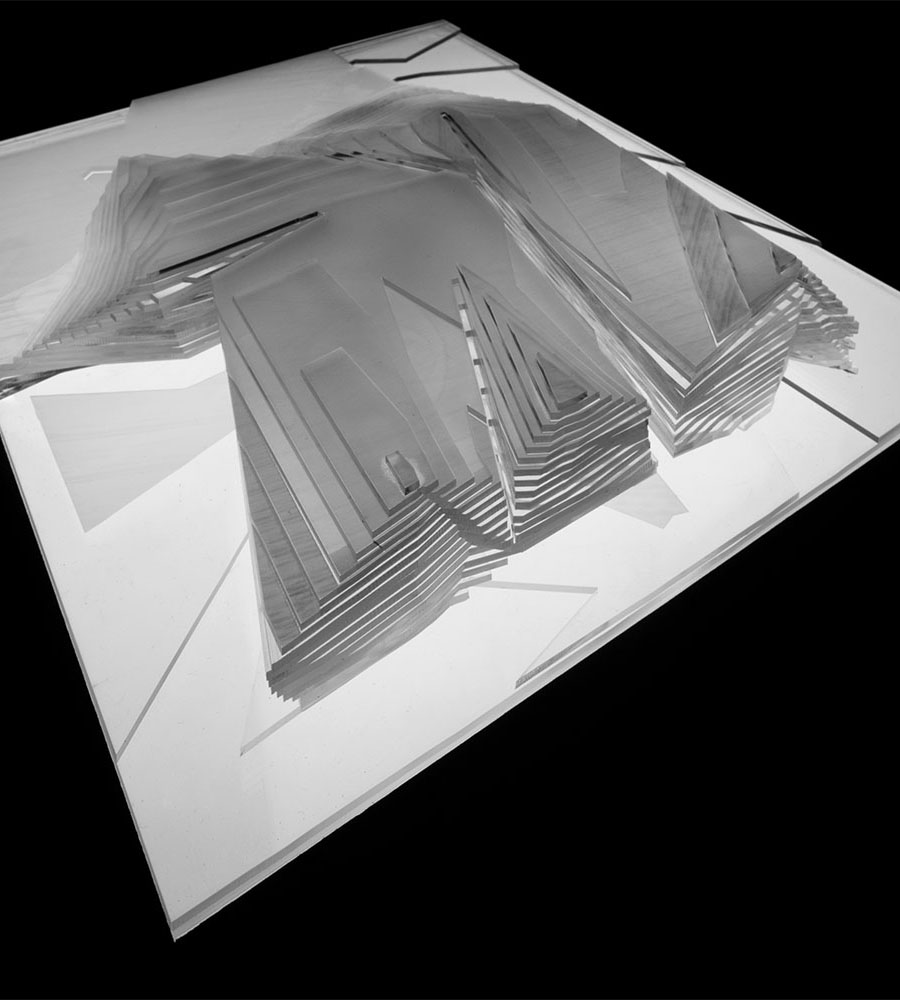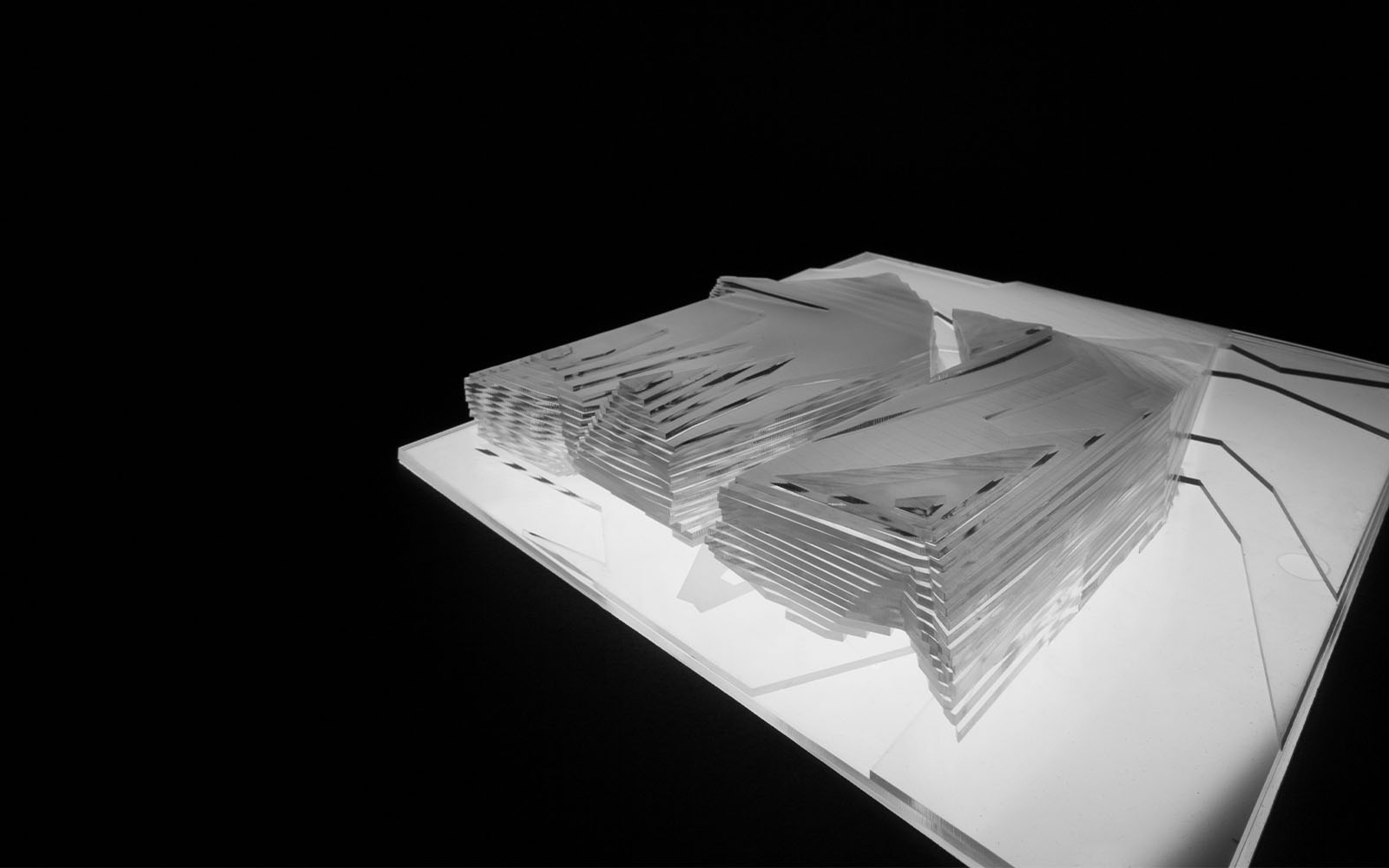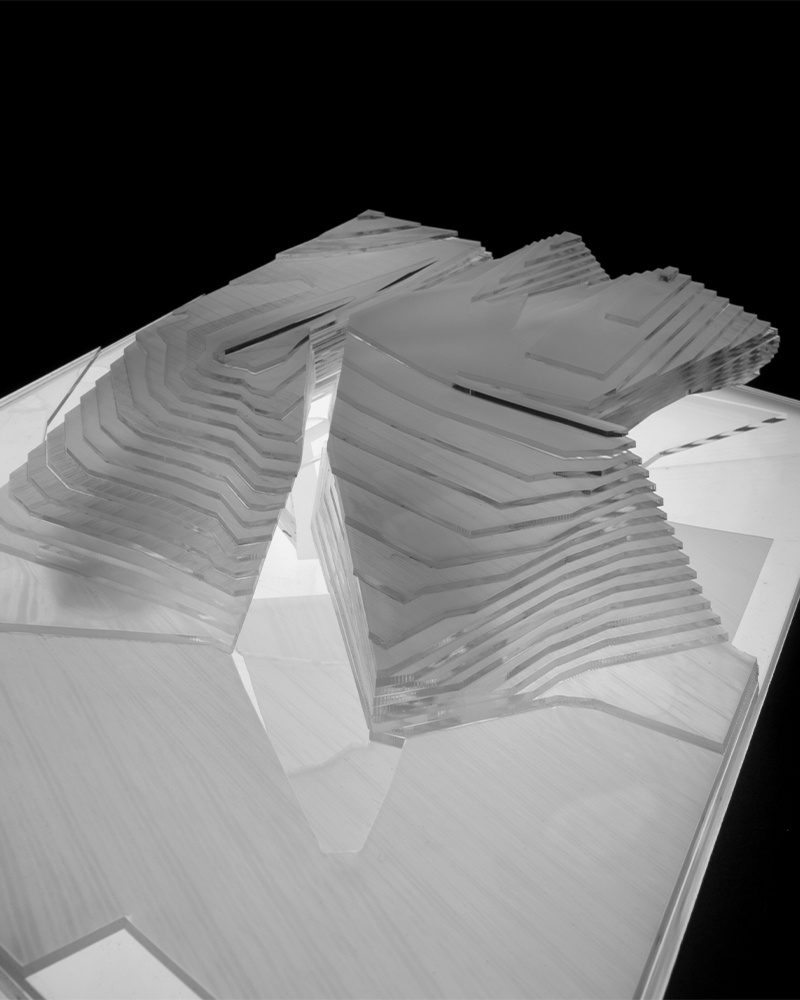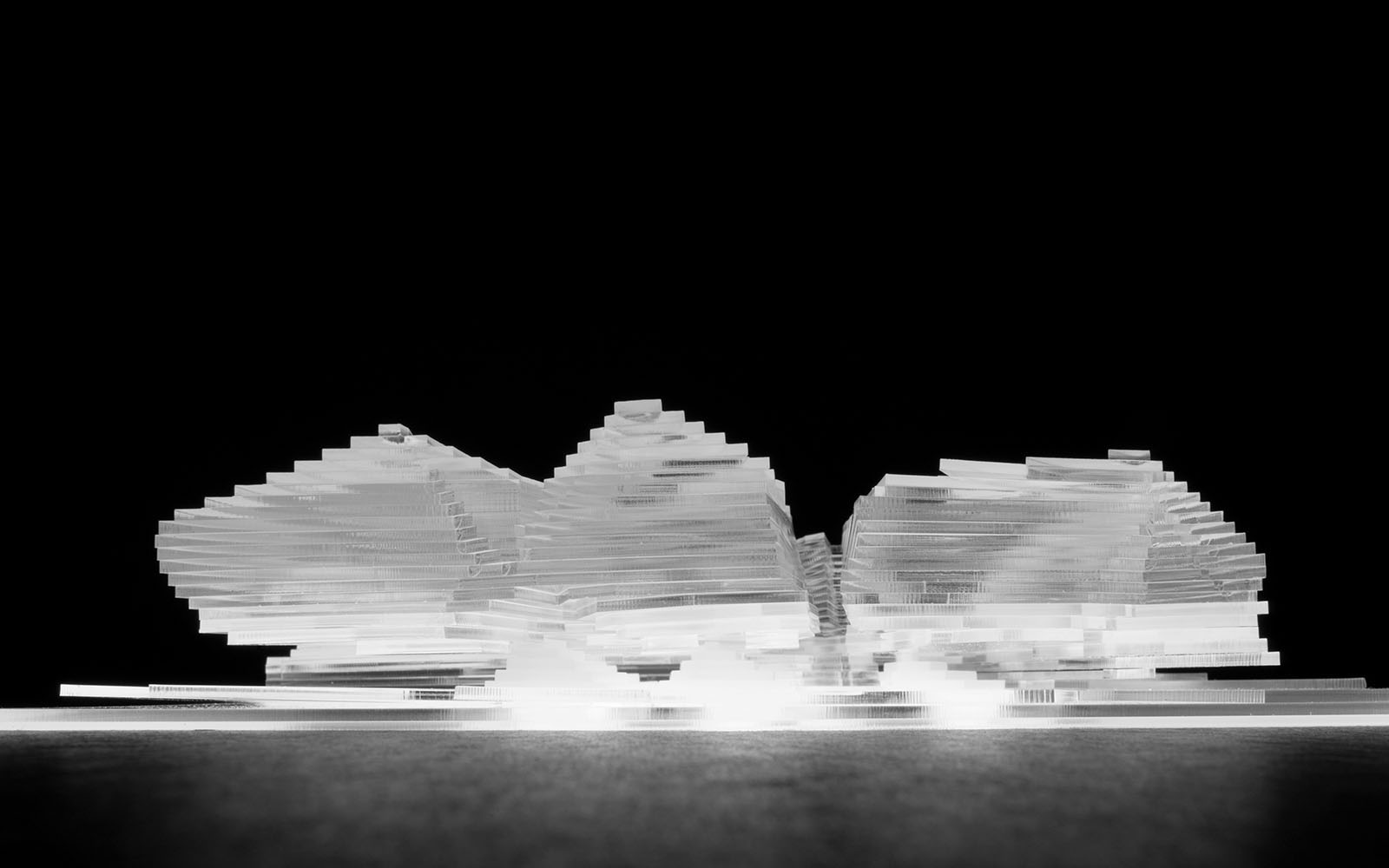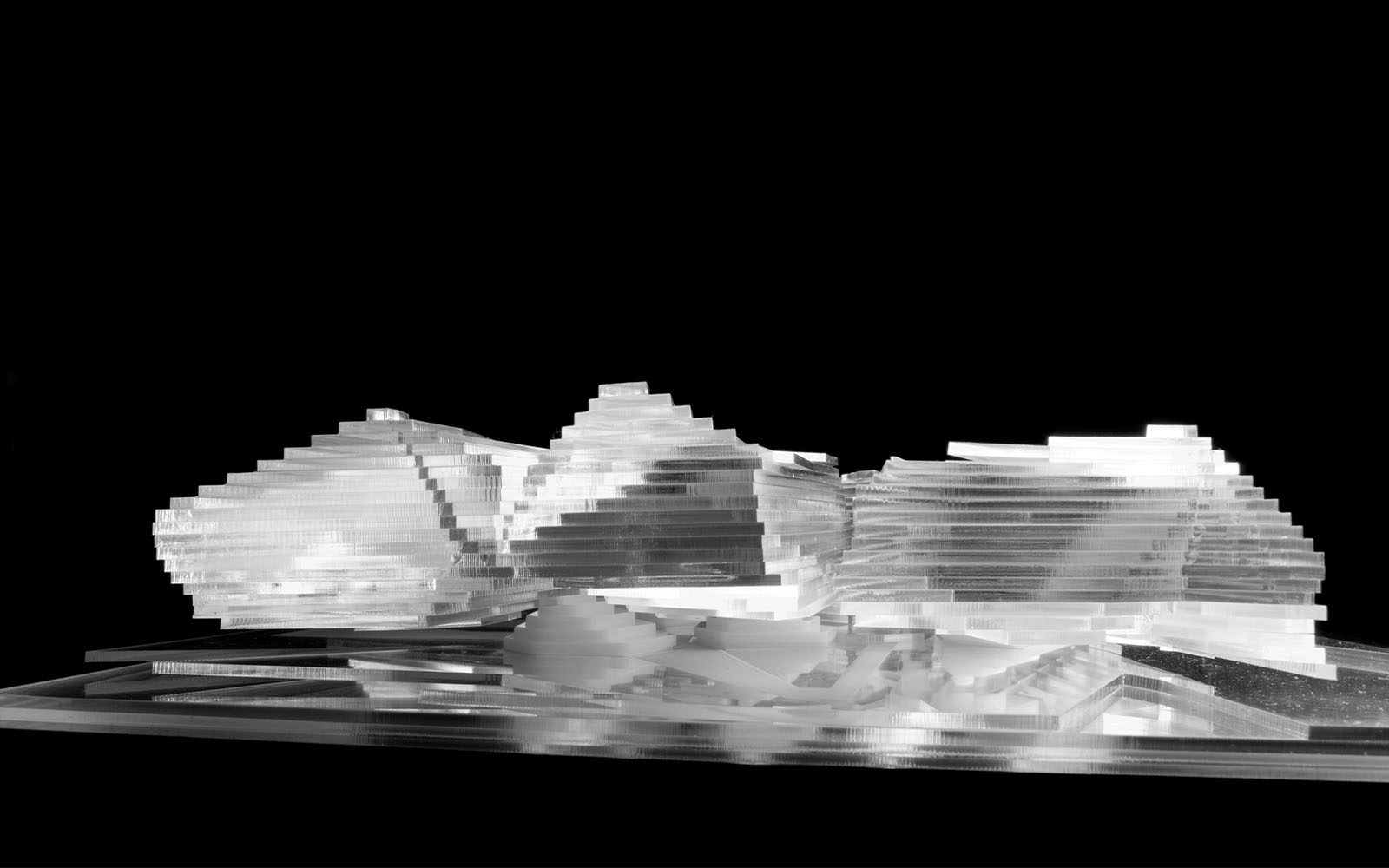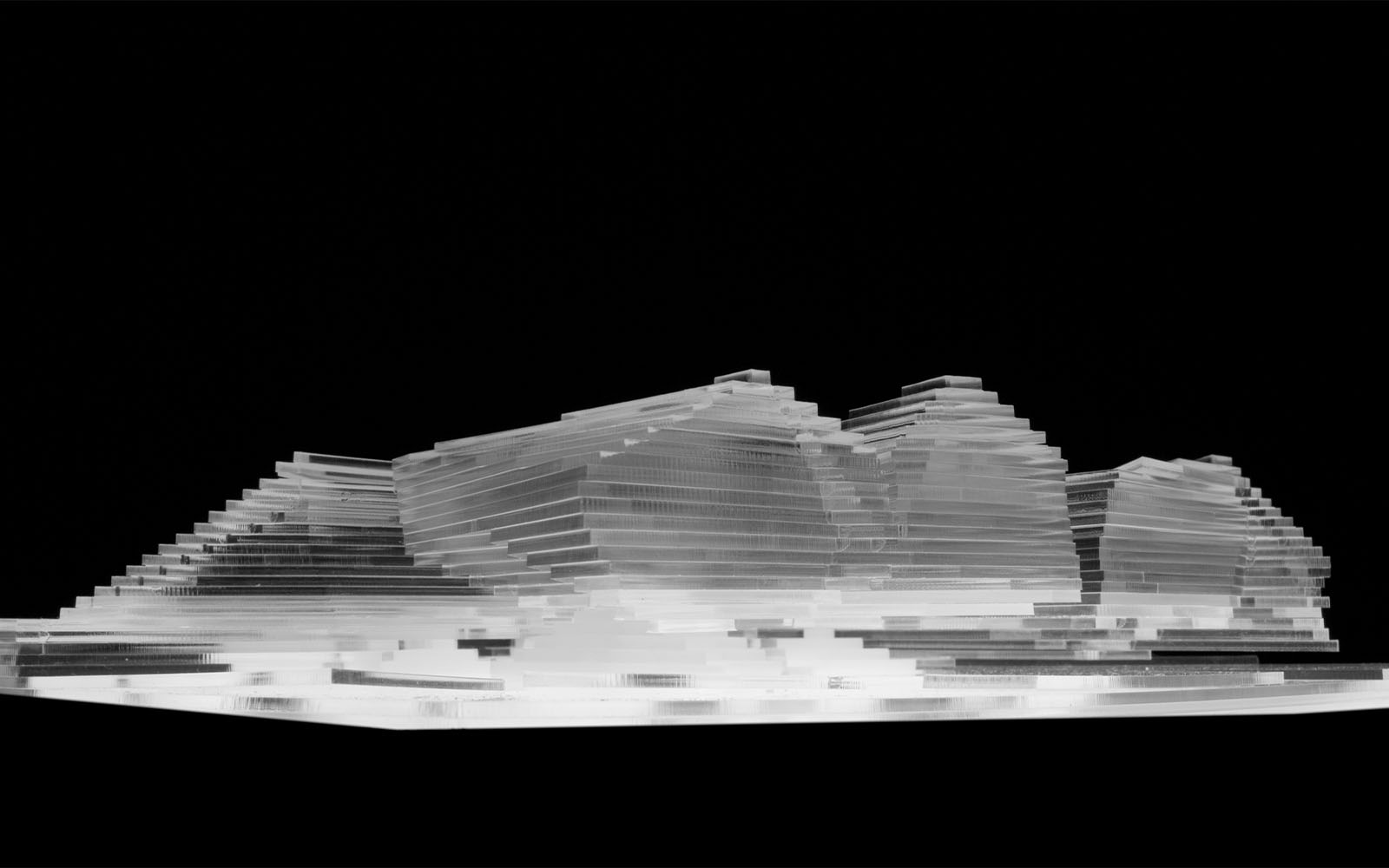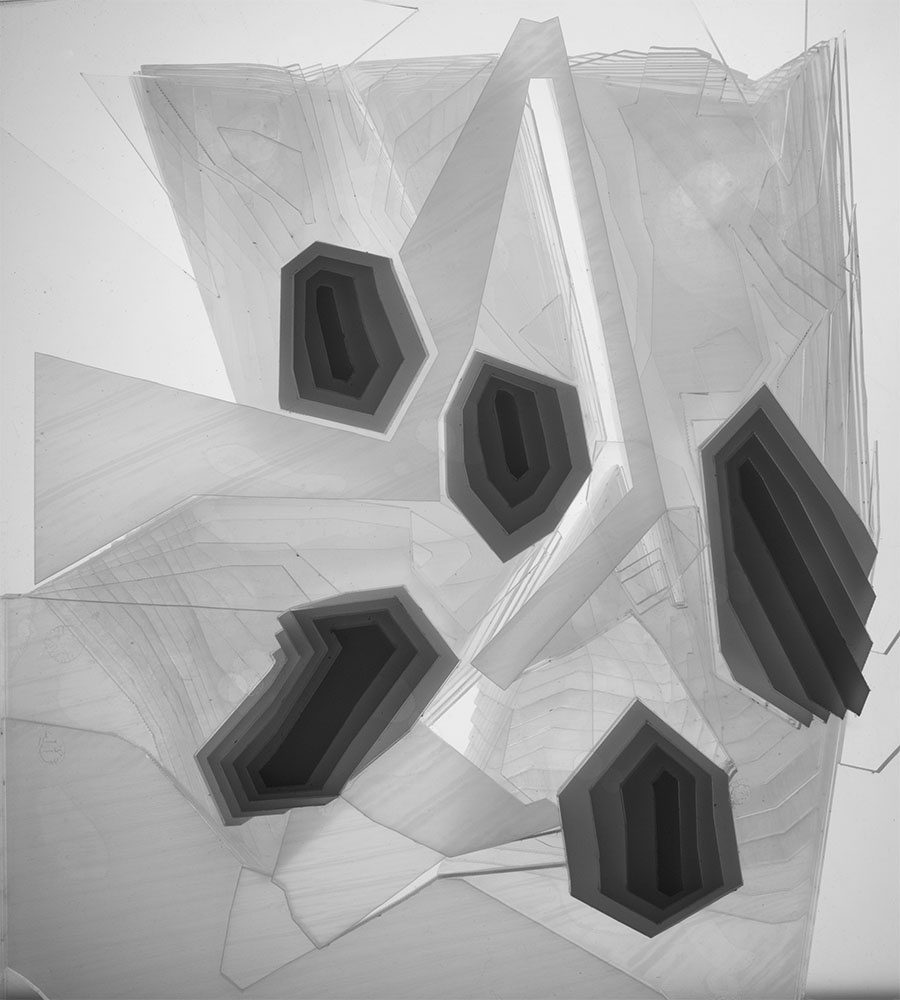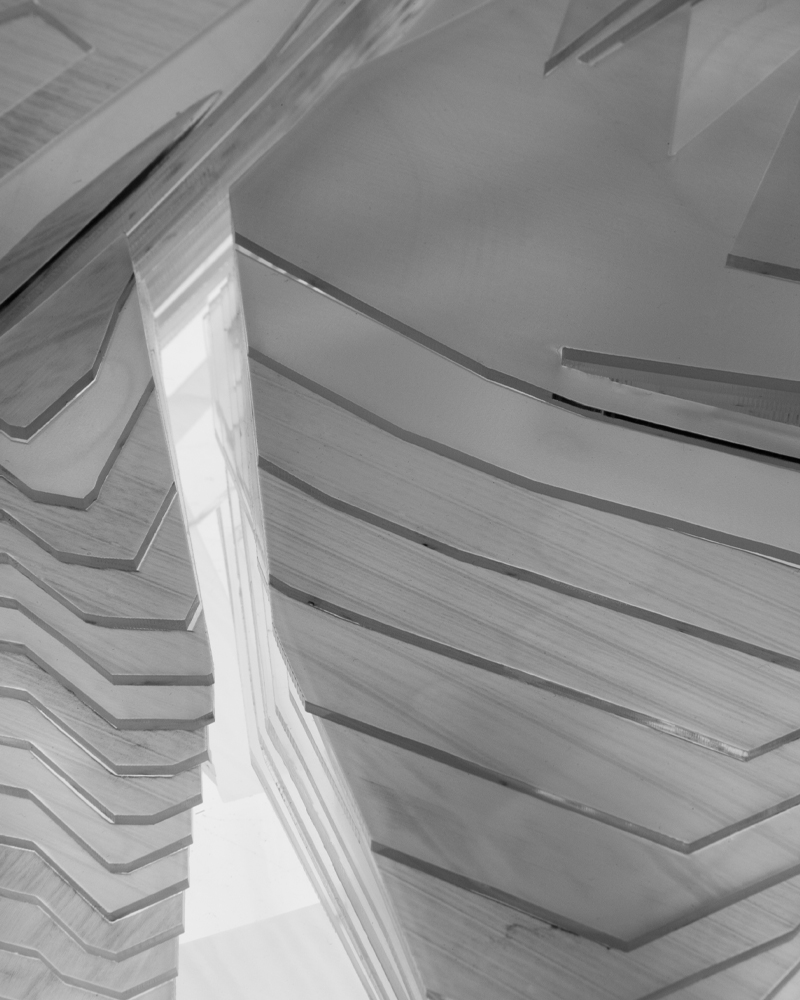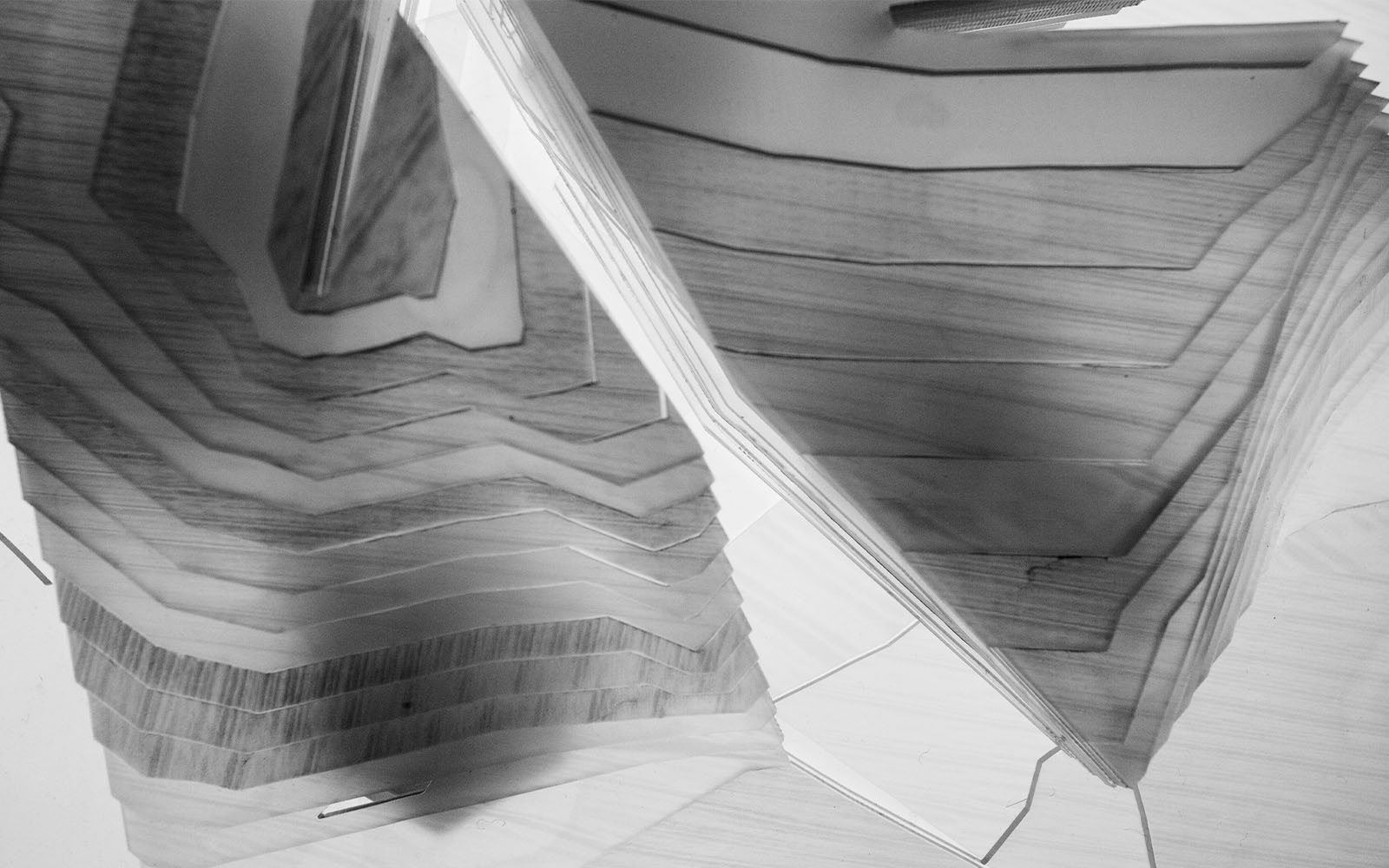-
A mysterious archive swept below a park
National Library in Prague
The site for the National Library of Prague project was was a park that sits above the river on a large plateau, adjacent to Prague Castle. Used historically as a parade ground for military and for temporary events, it seemed incongruous to use up a corner of this park for a library. The question was how to place a library in a park, while maintaining the park.
Driven in the first instance by siting concerns, our proposal for the National Library eschewed notions of the building as ‘object’ and instead worked with the ground to create a series of unexpected spaces not included in the brief. Such third spaces – the parkland roofscape and an opening at ground level to the street where the archive containers can be encountered directly – embedded in the project in the city and enabled new experiences for all inhabitants.
- TYPE Public
- LOCATION Prague | CZ
- YEAR 2005
APPROACH
TERROIR took the approach that Prague, as a city of dark nooks, tucks and folds in landscape, could understand a library that was folded into the park itself. By picking up the corner of the park, like a large velvet cloth, space could be made for the library below in the cracks and folds of the fabric/landscape as it is tensioned.
The central element of the library was to be an archive of Czech literature. With the fabric defining the uppermost limit of the building, the archives were buried in the ground as ‘eggs’ that emerged into the foyer at ground level. Within the thickness of the lifted ground above, there was a home for more conventional library functions.
